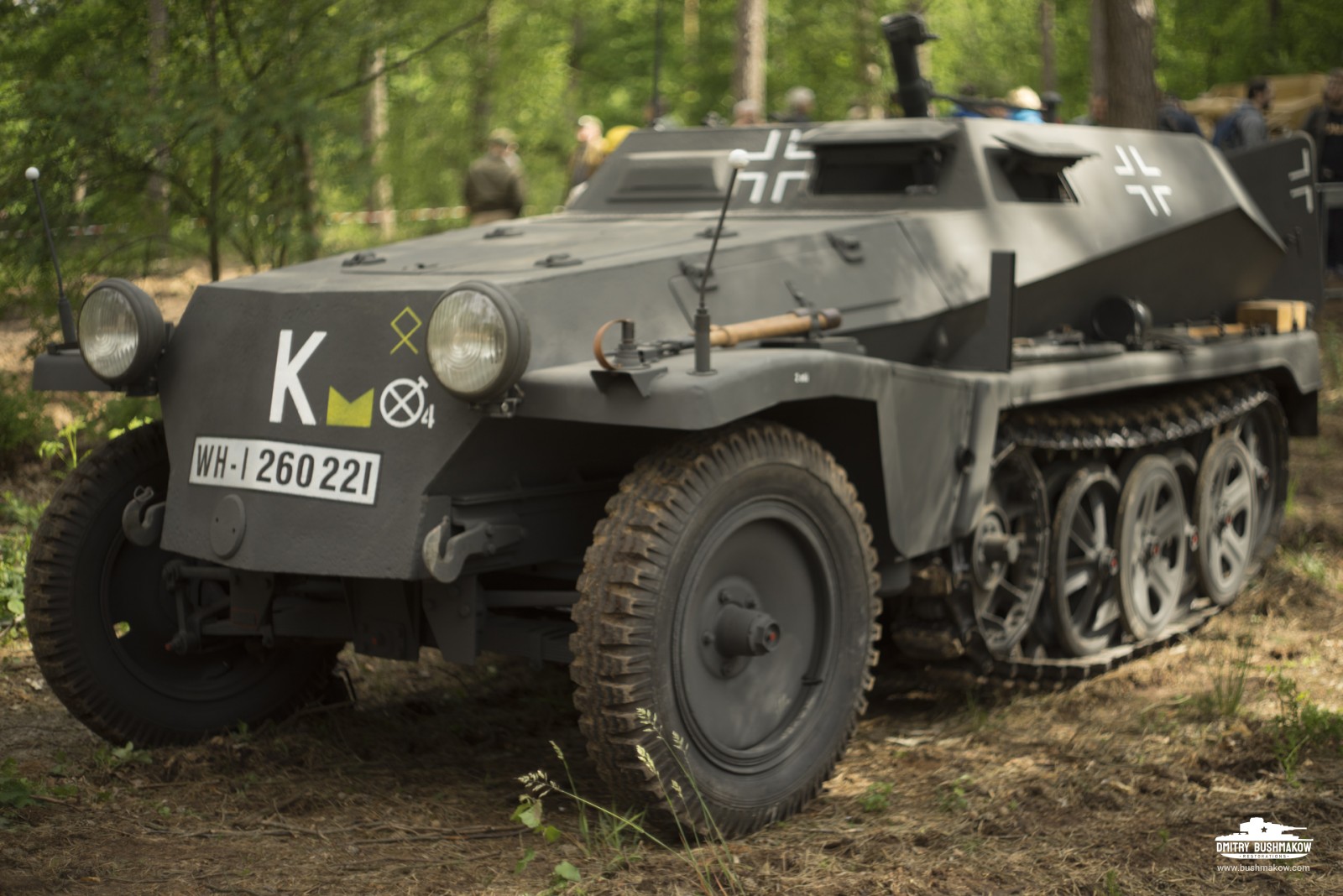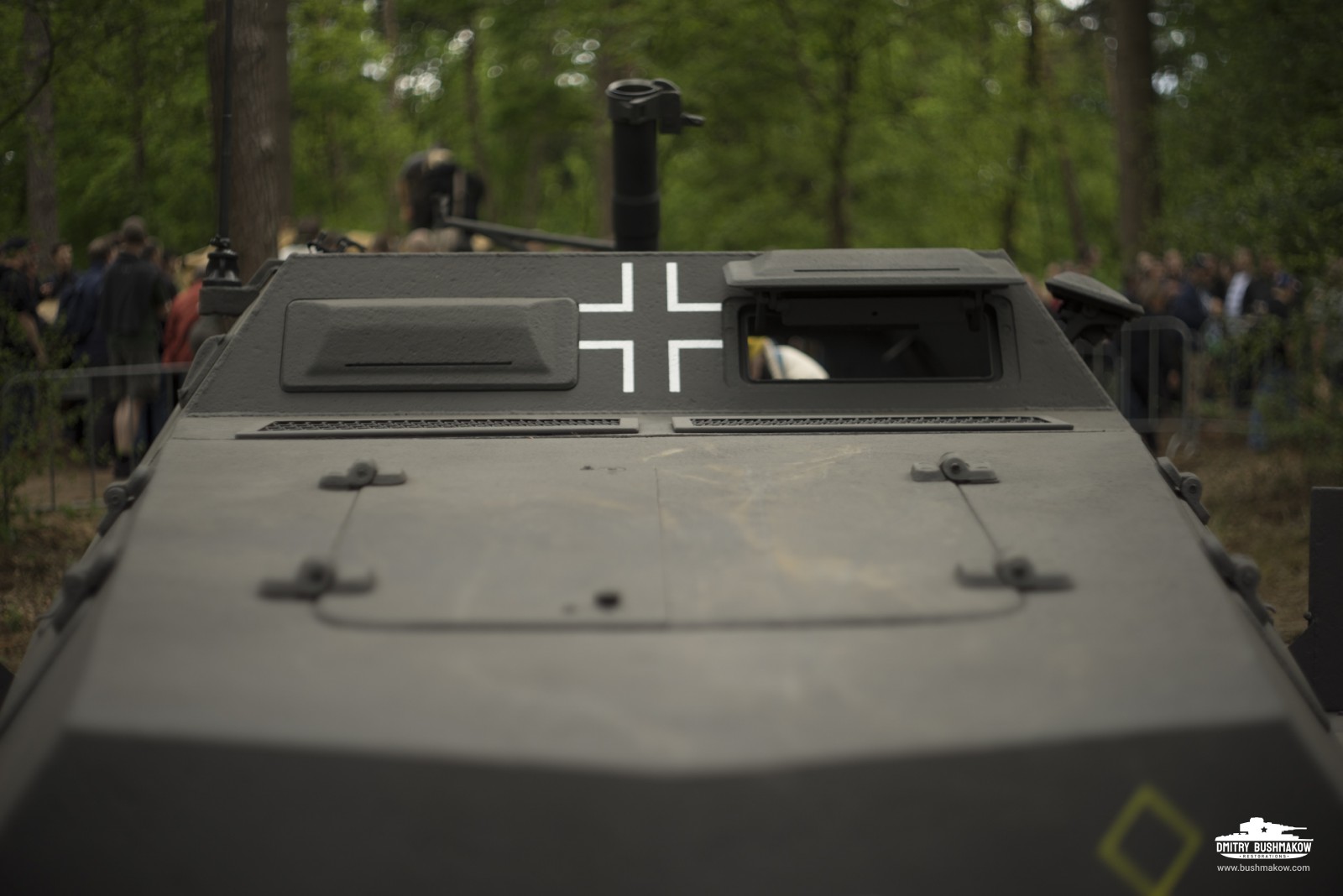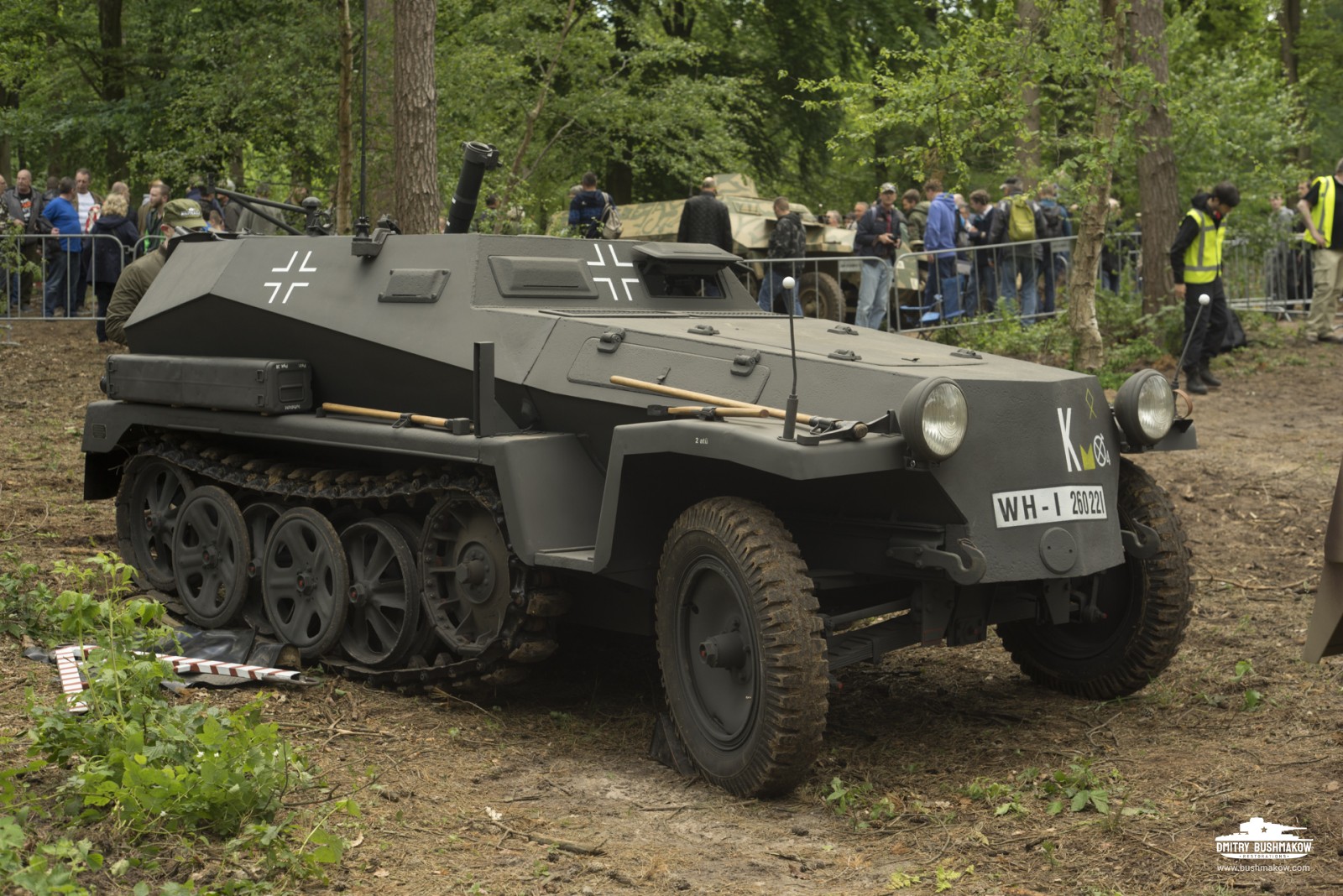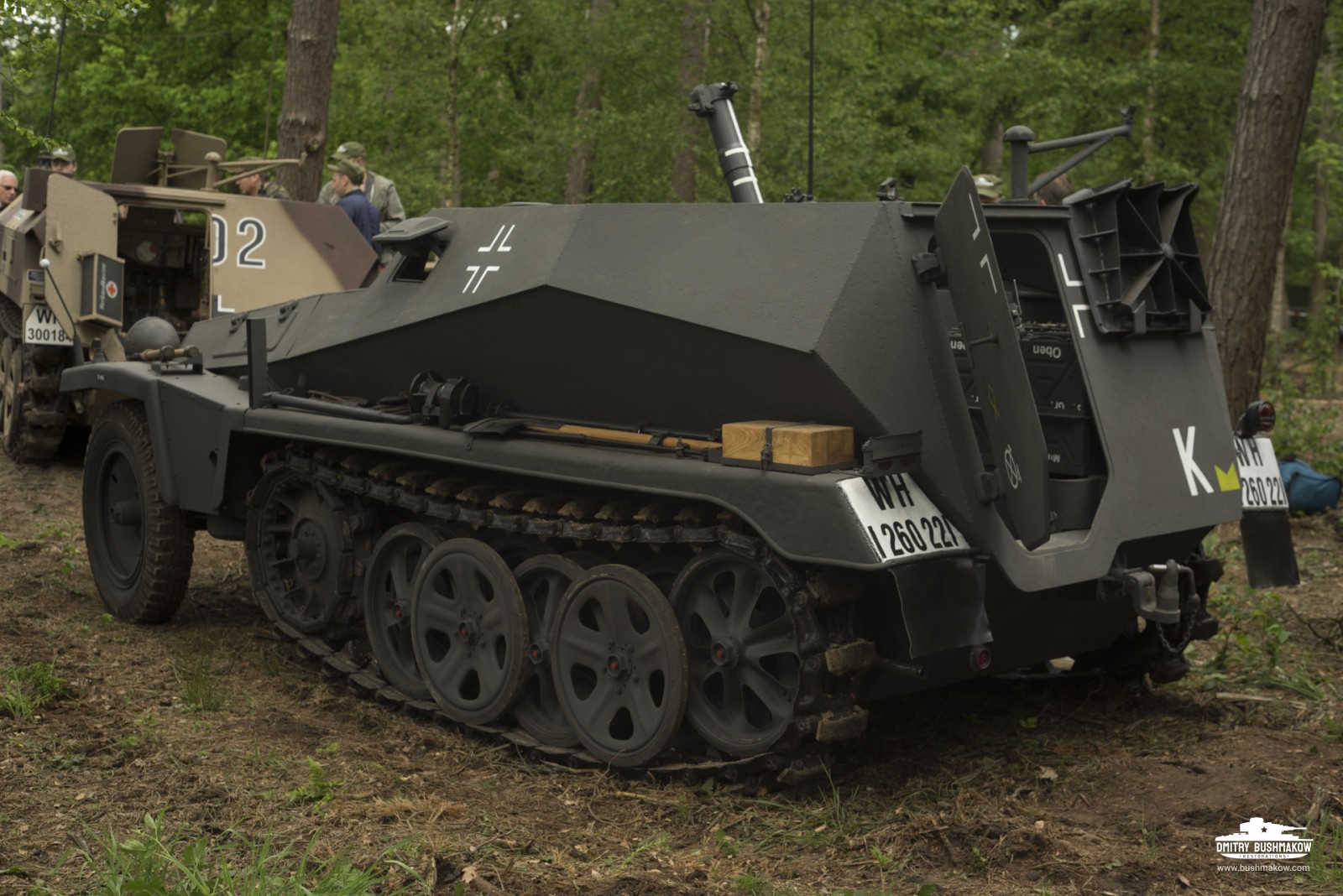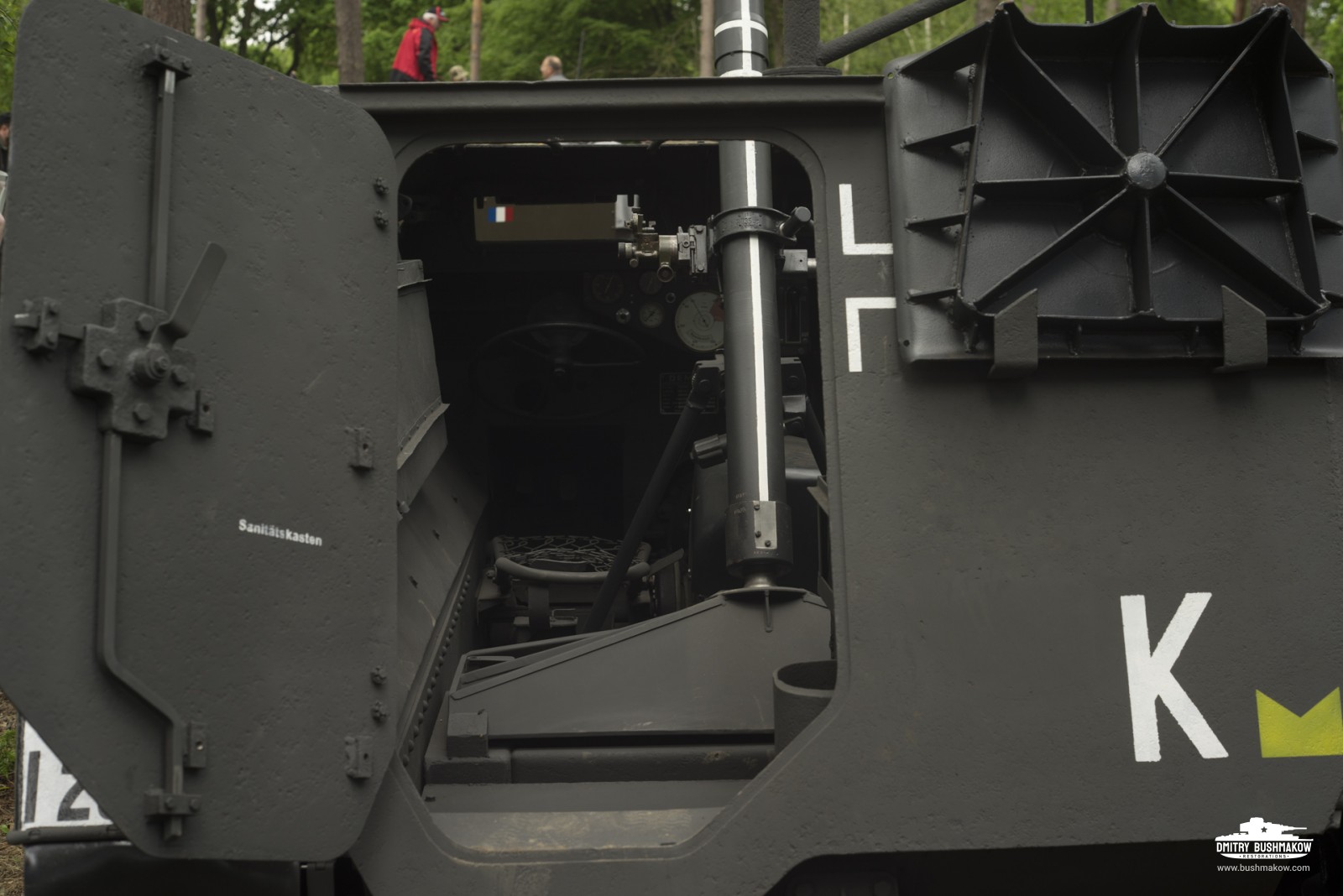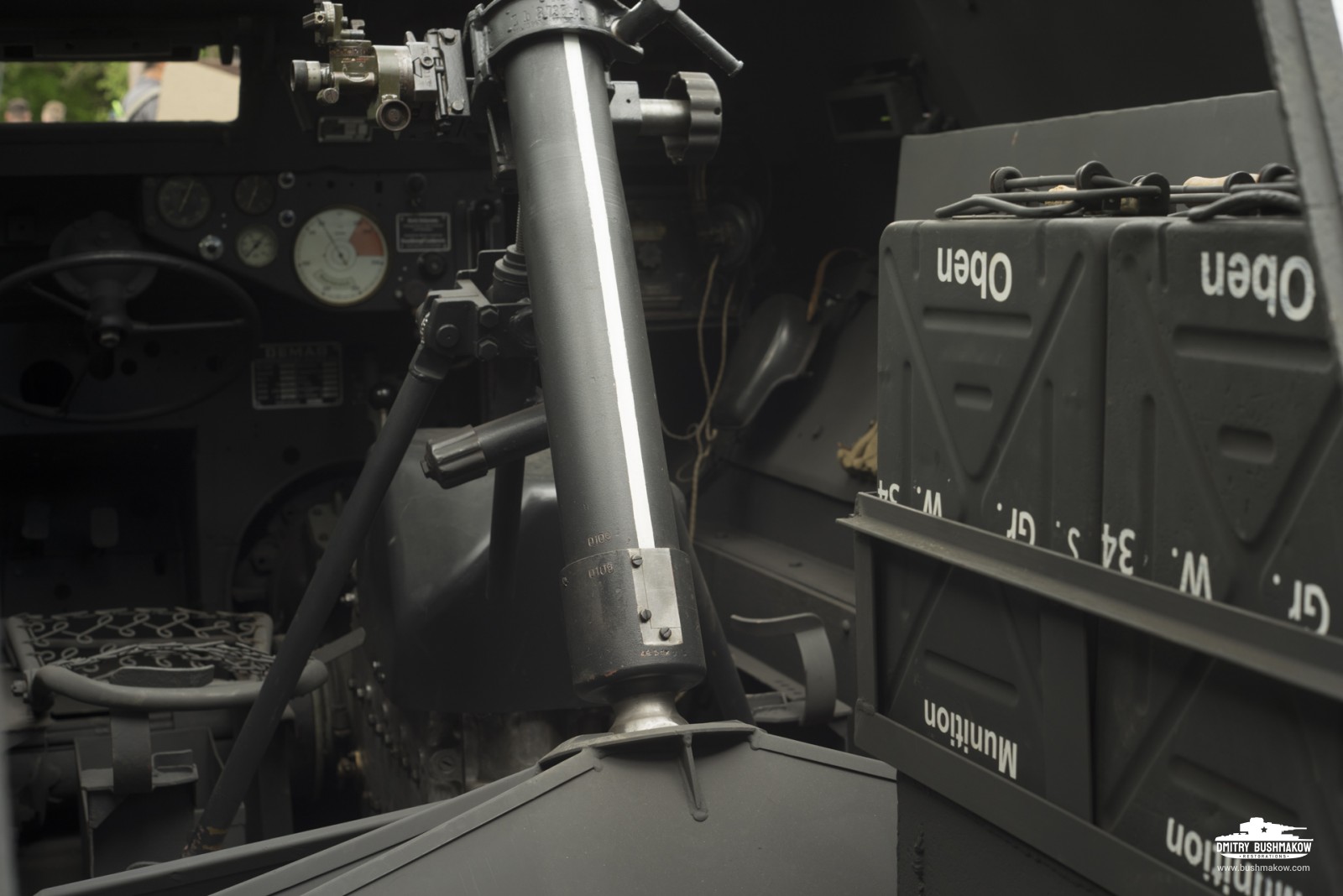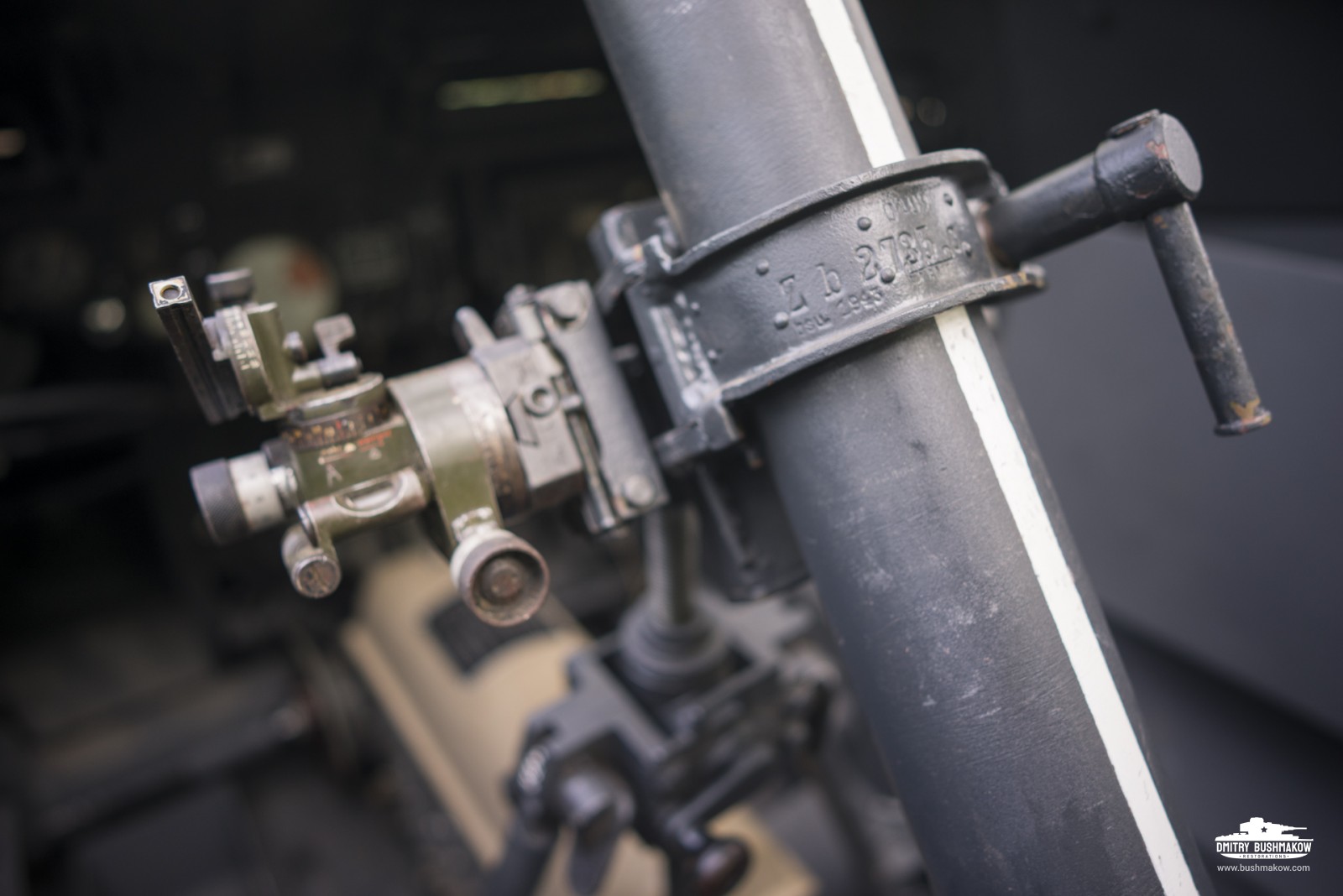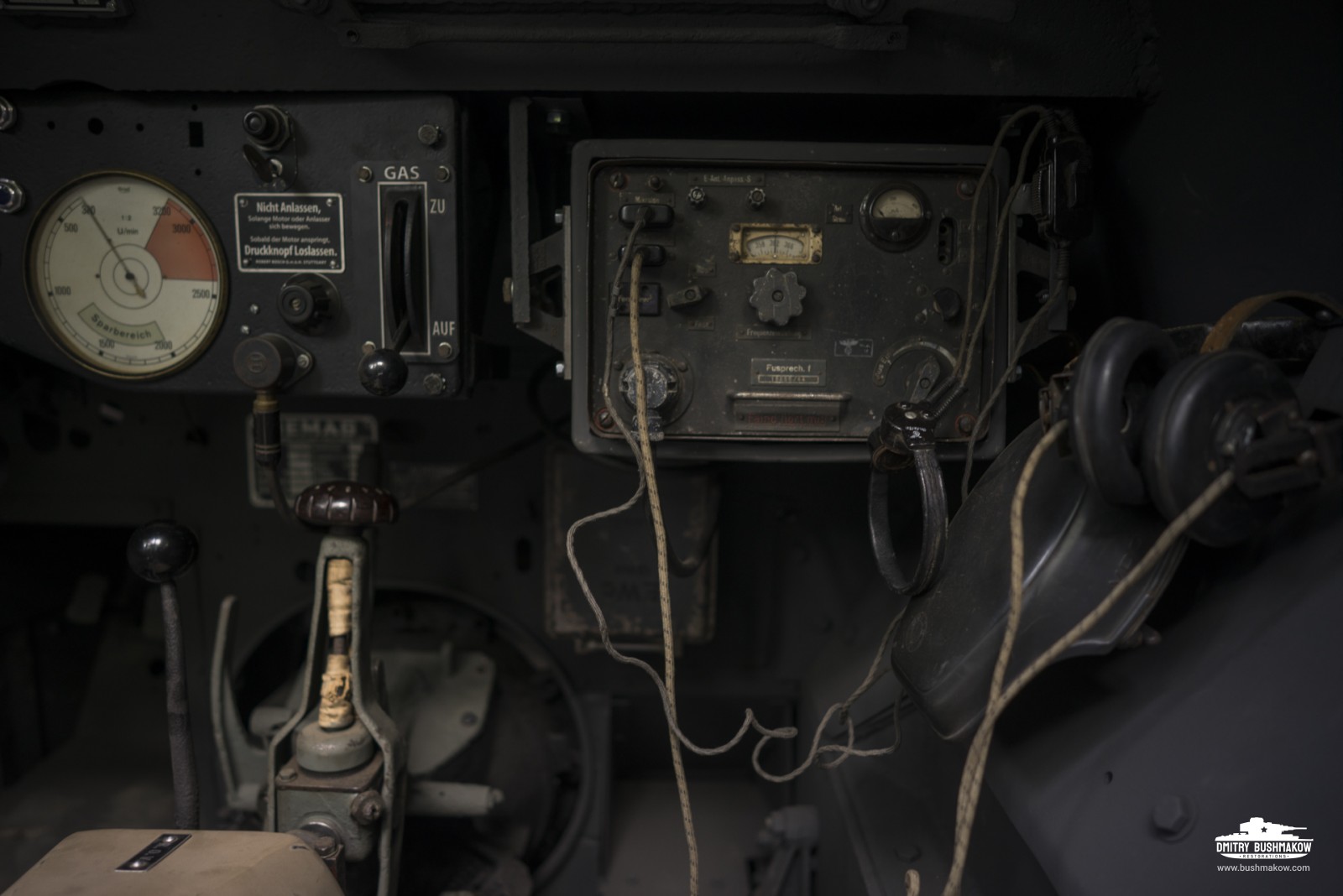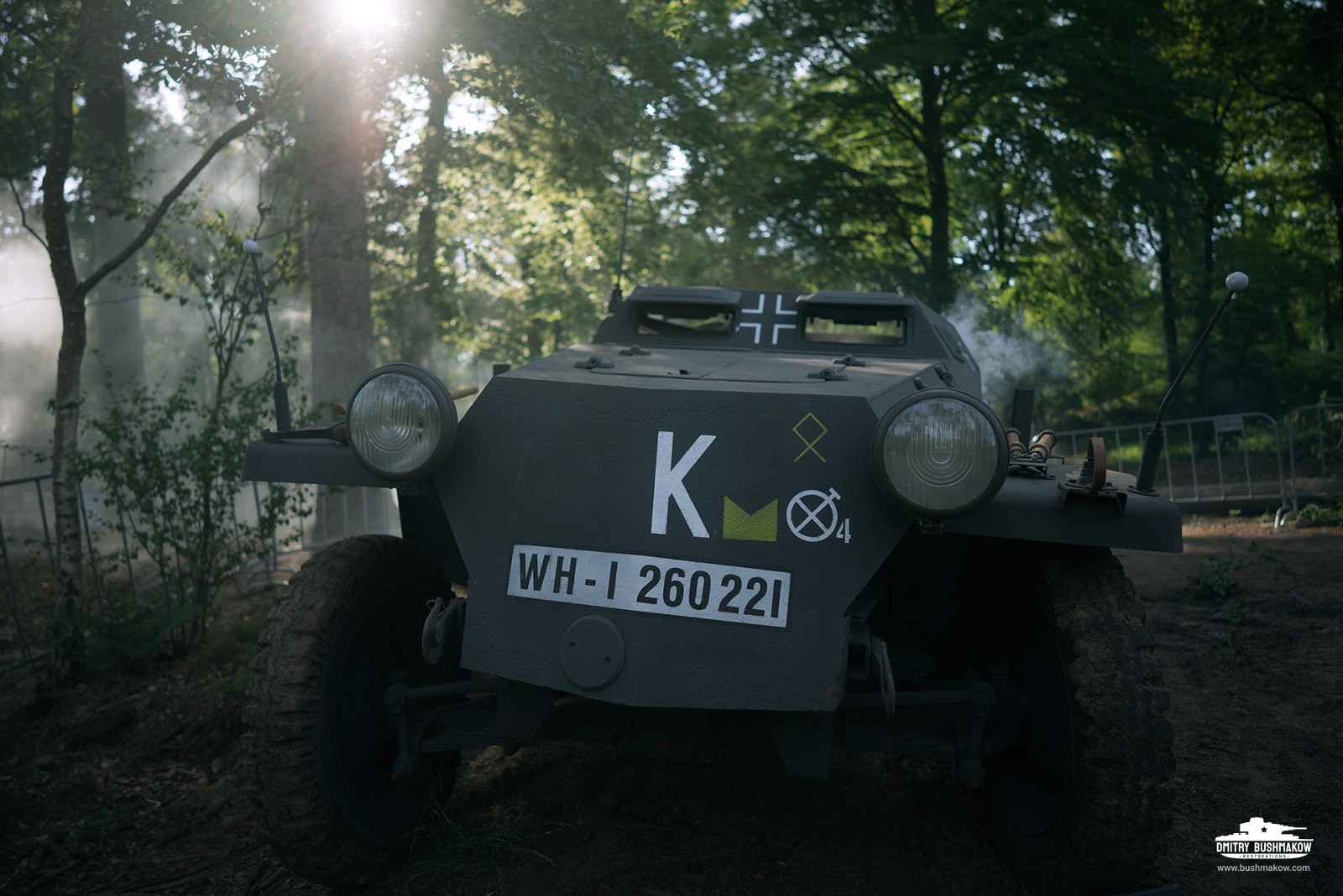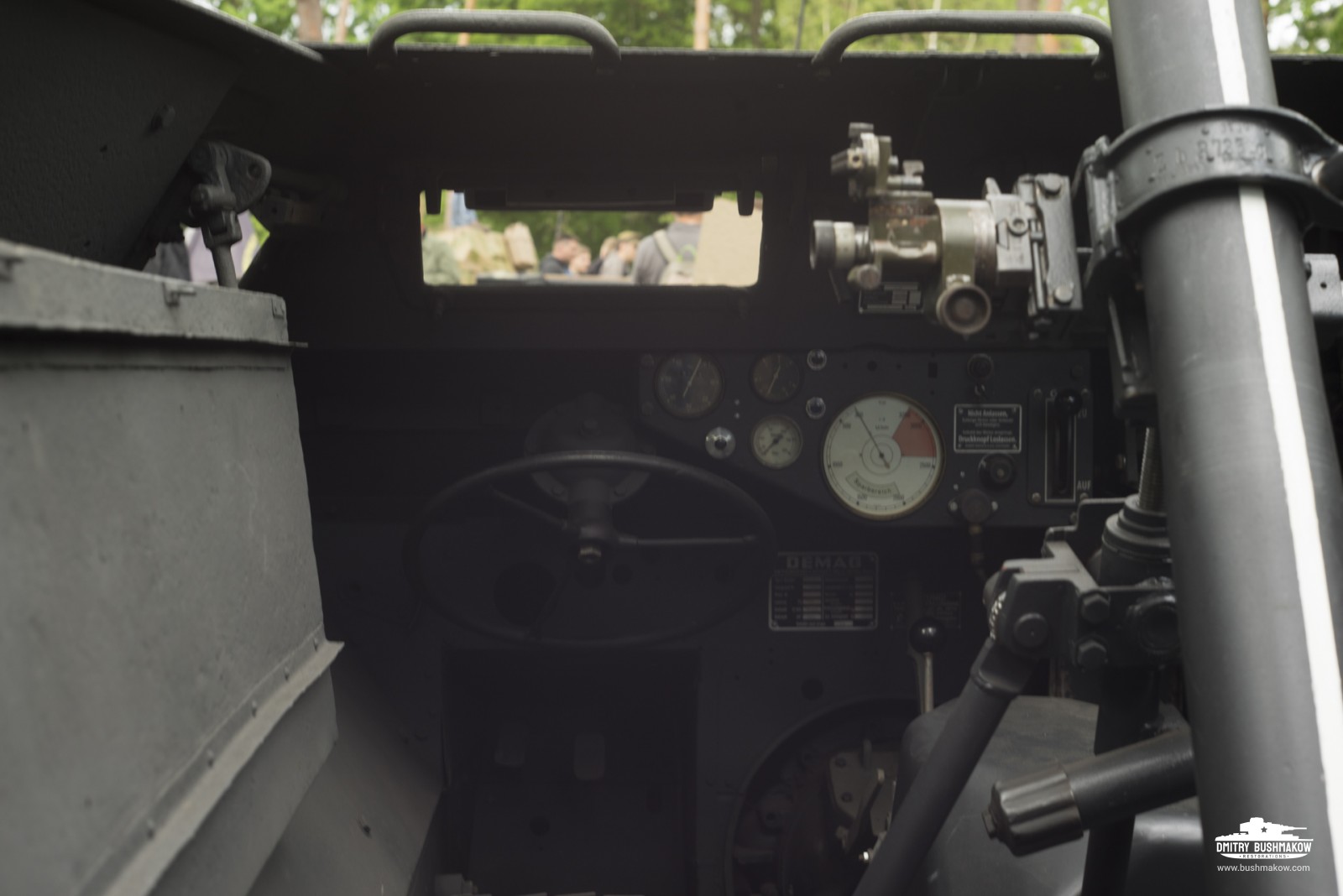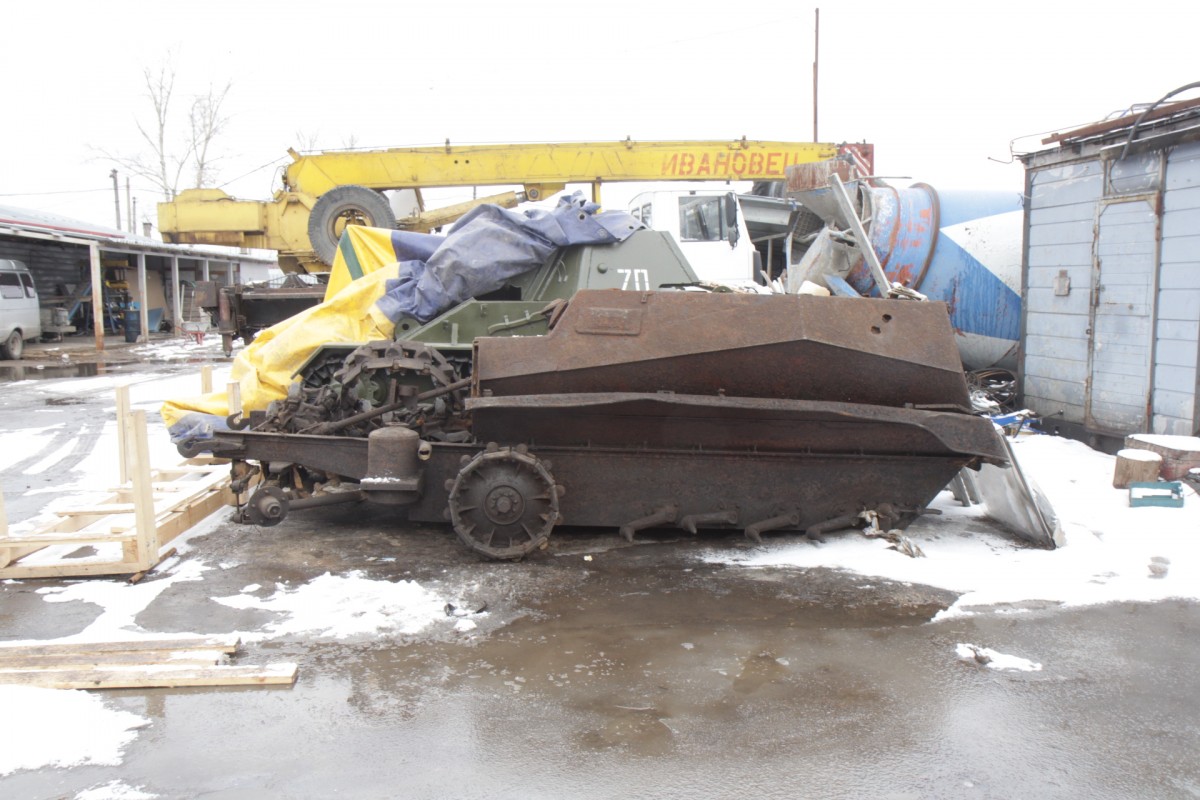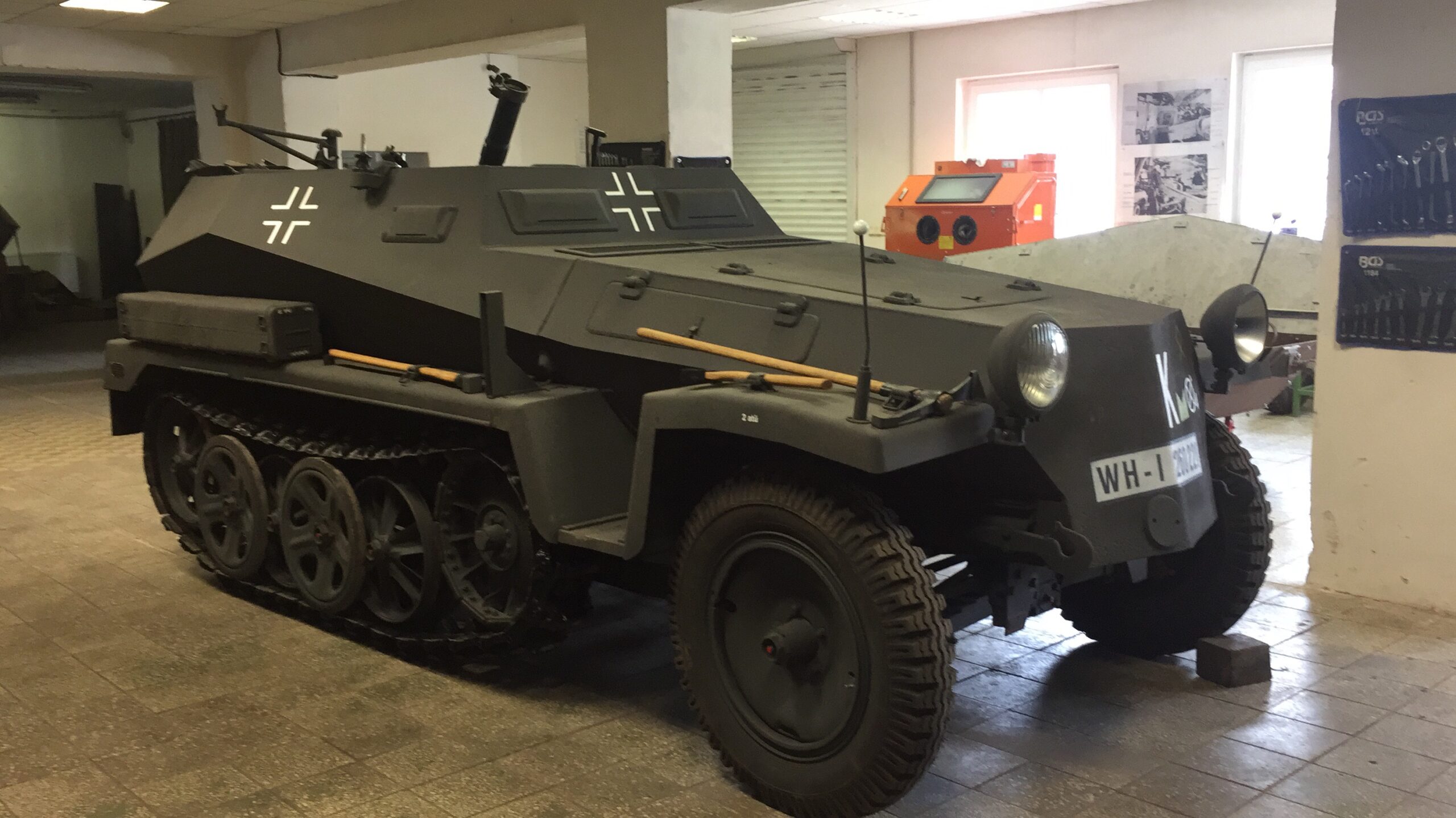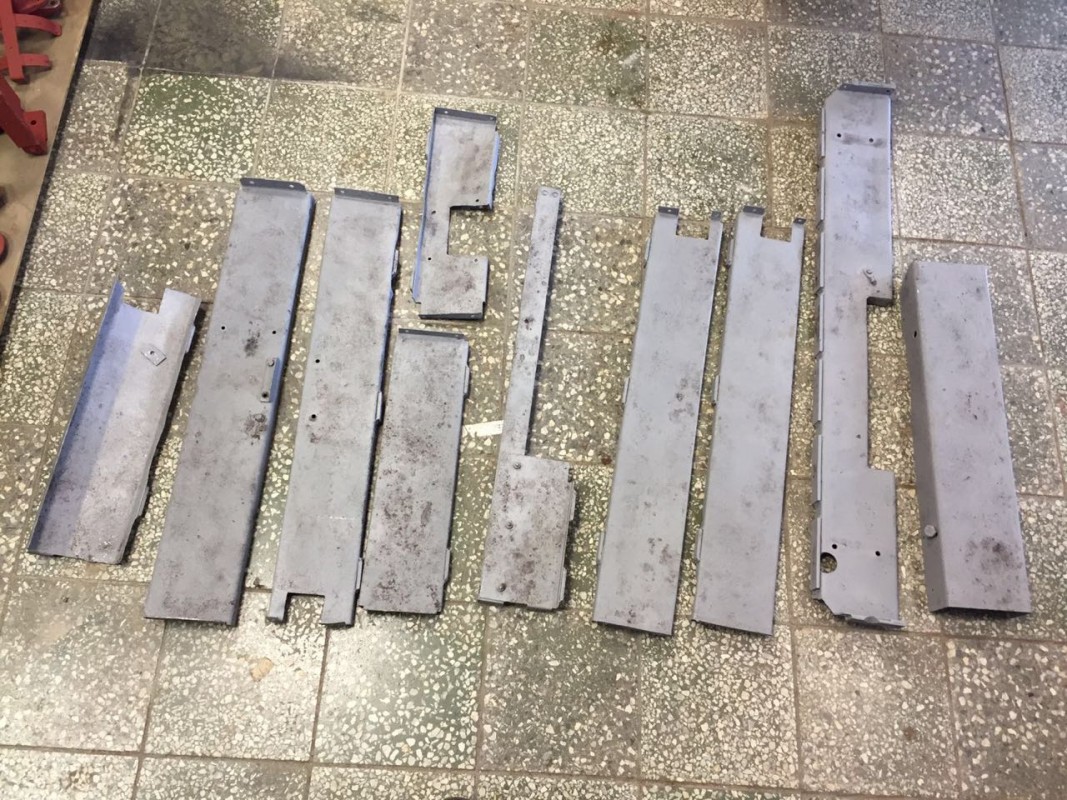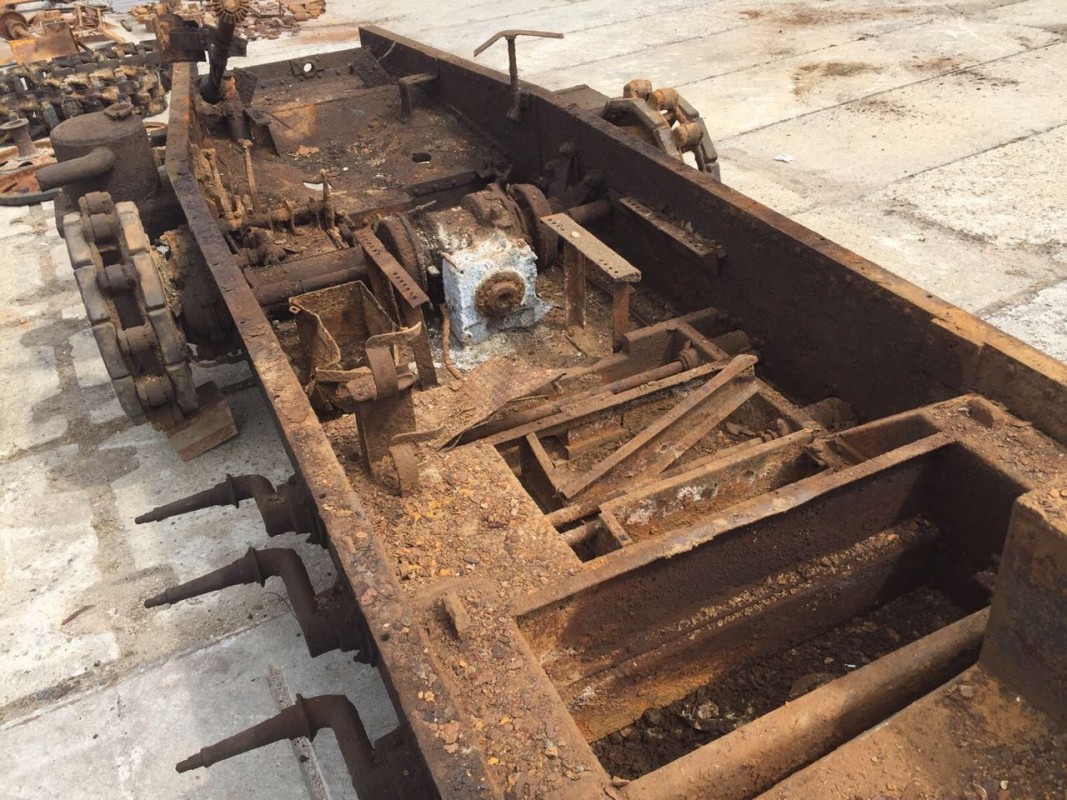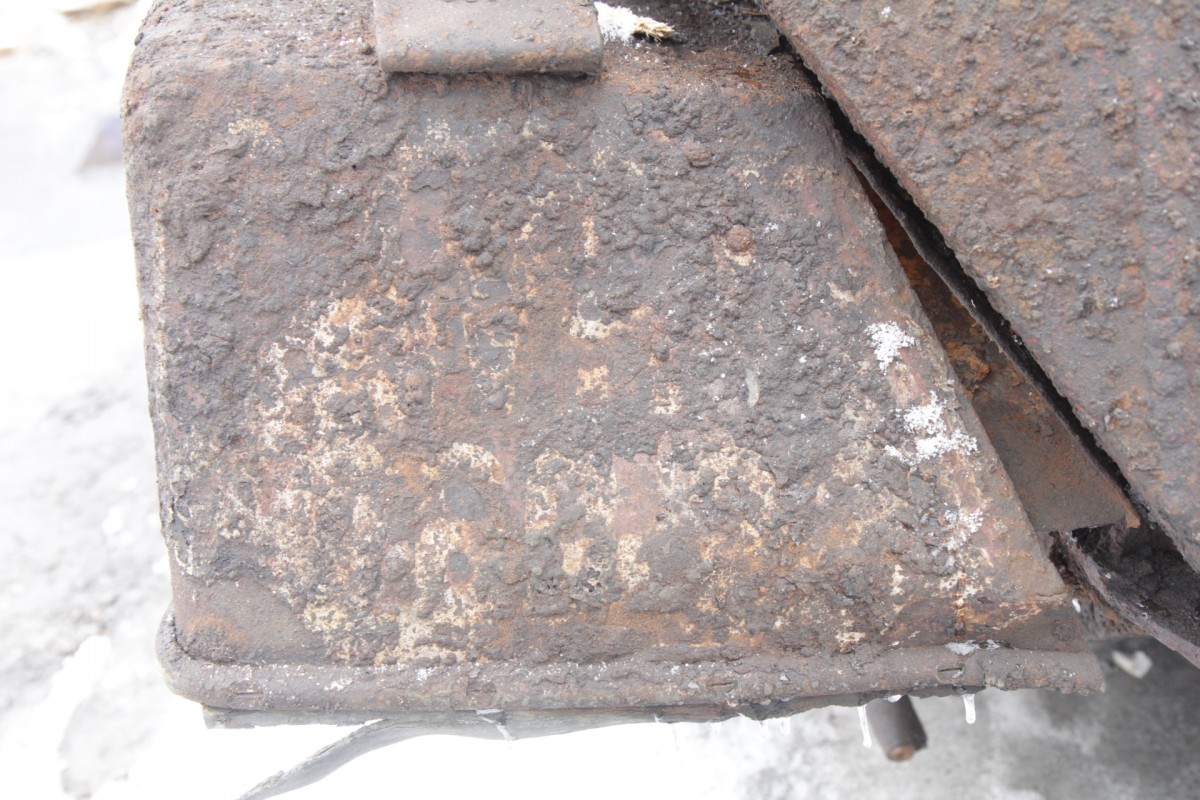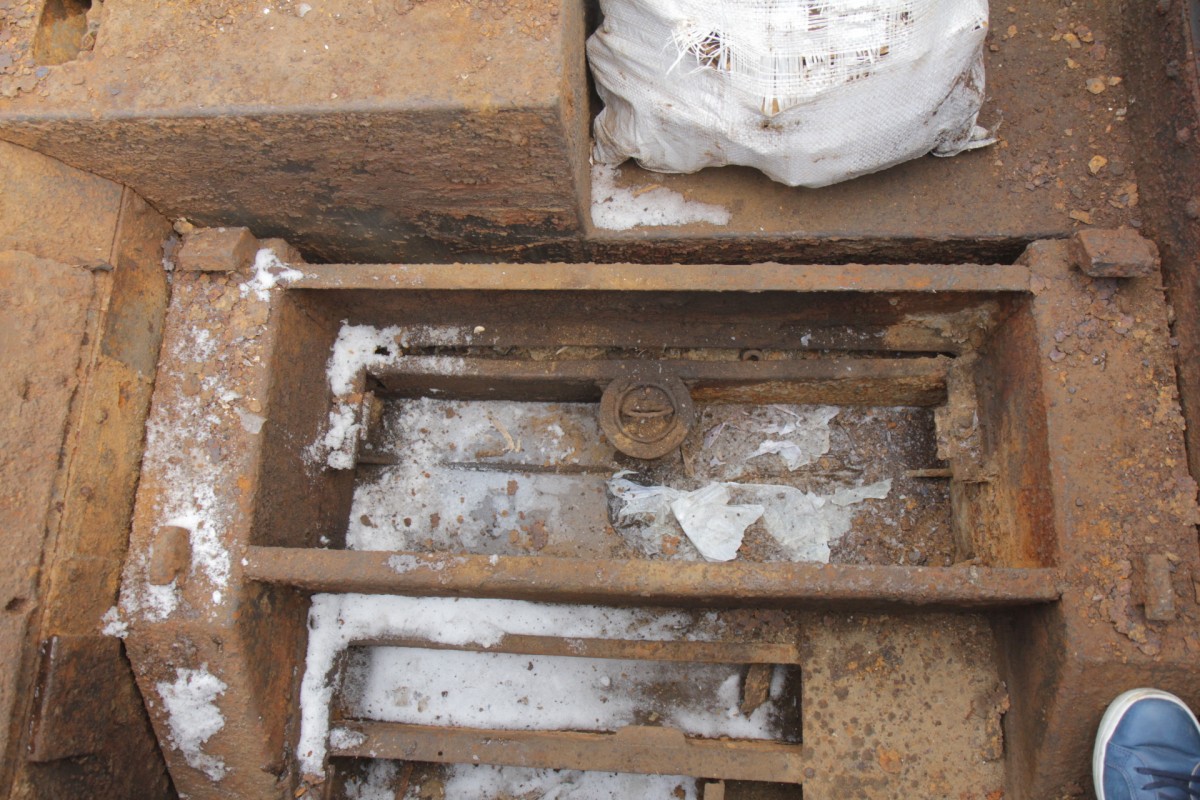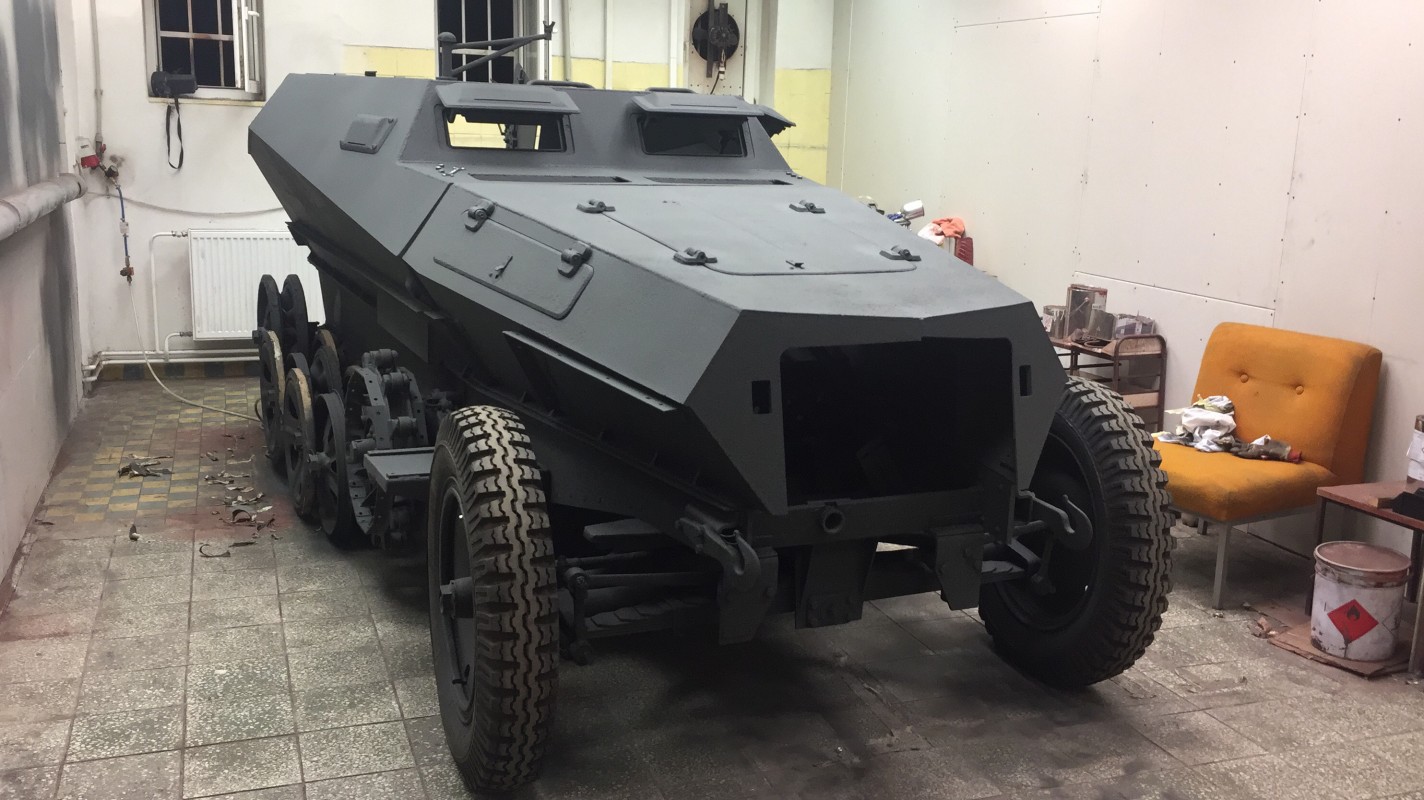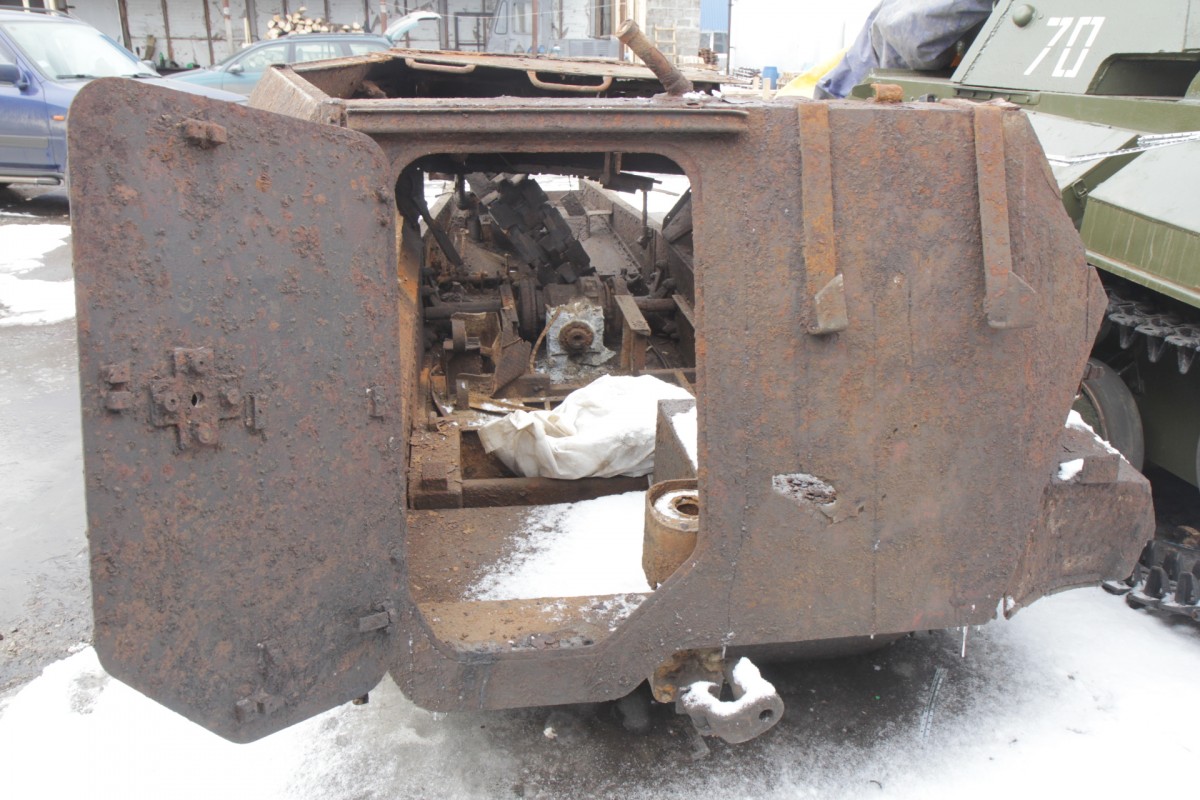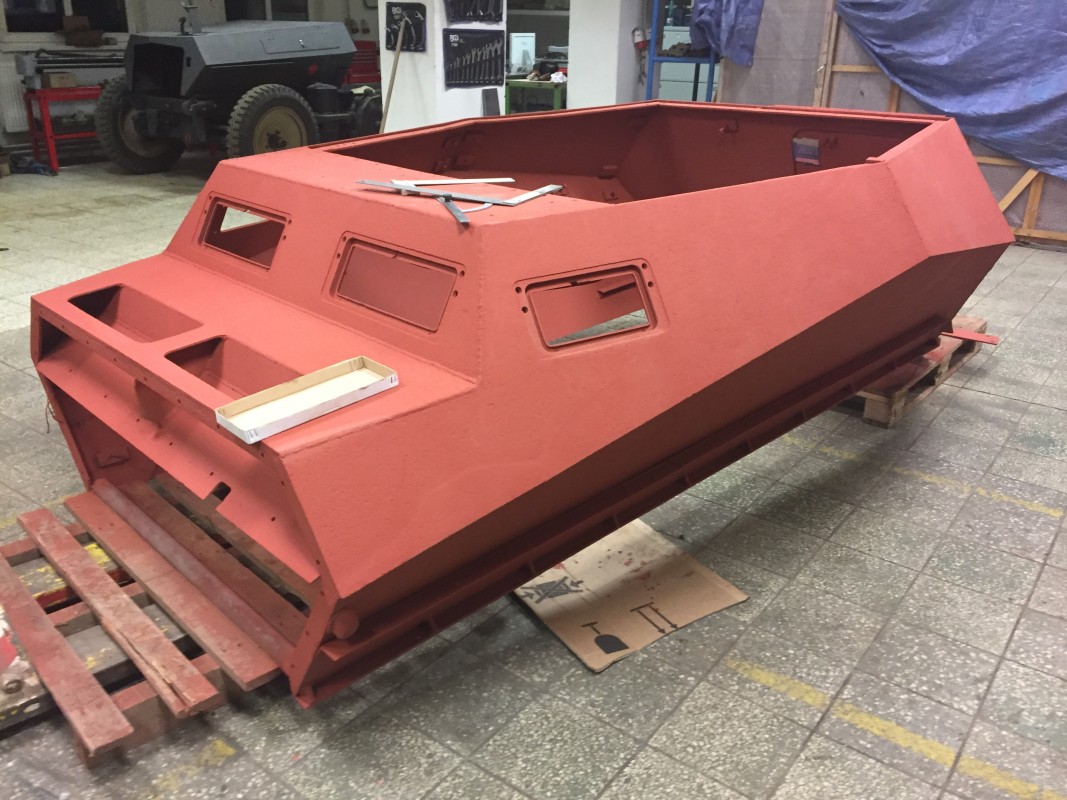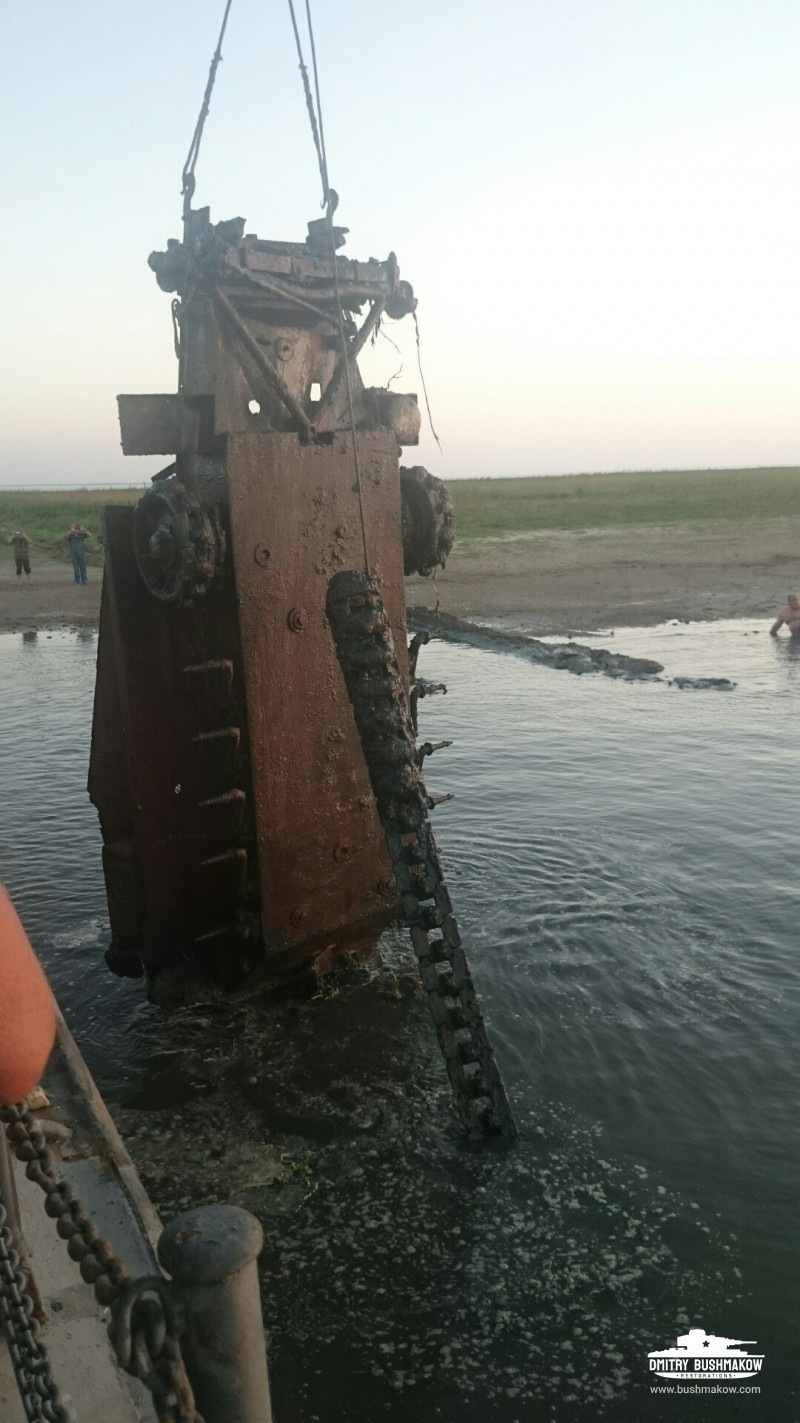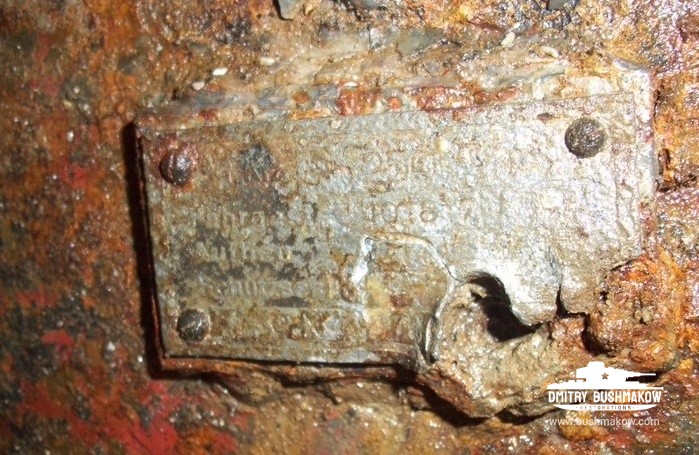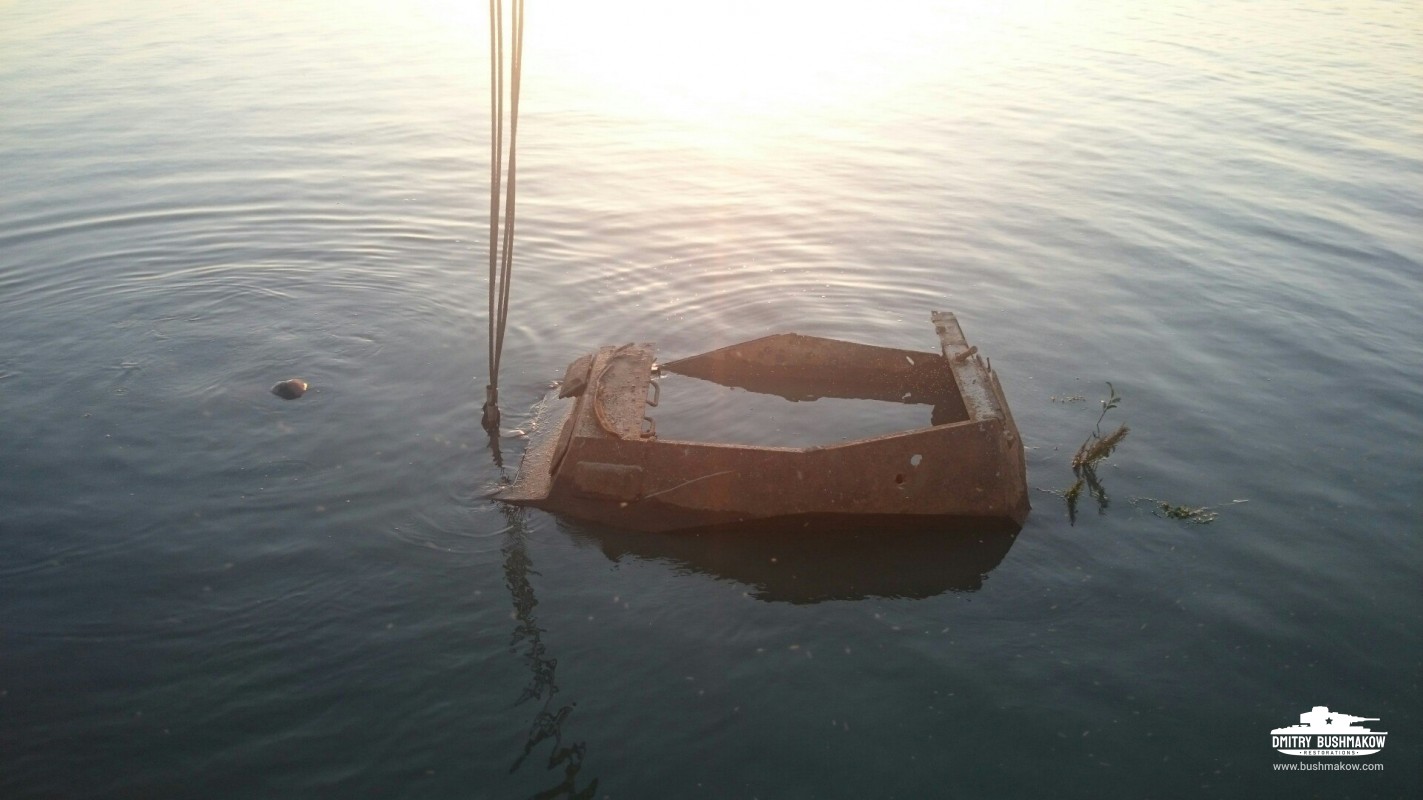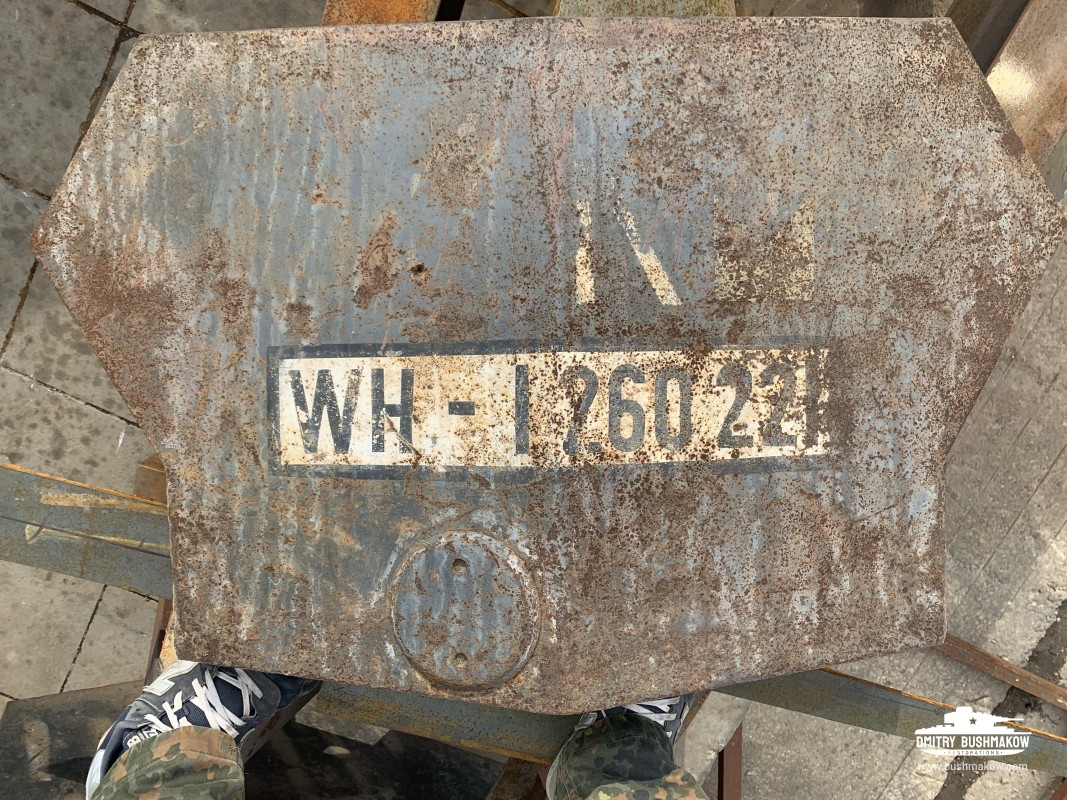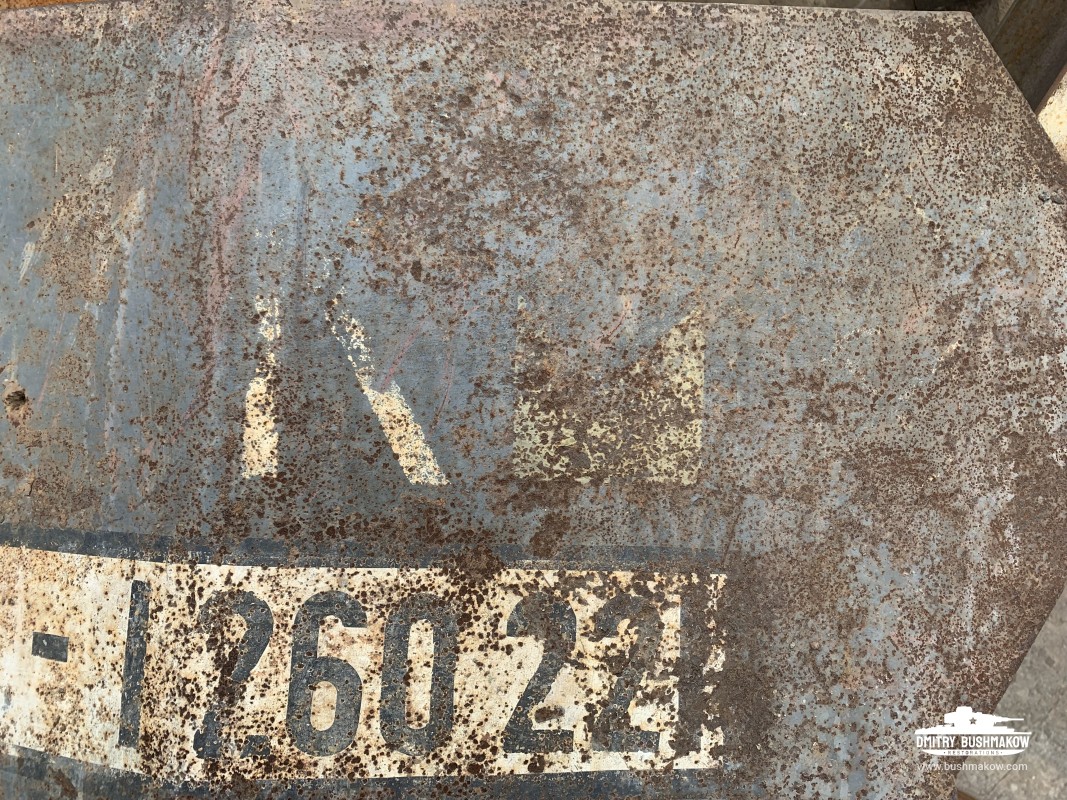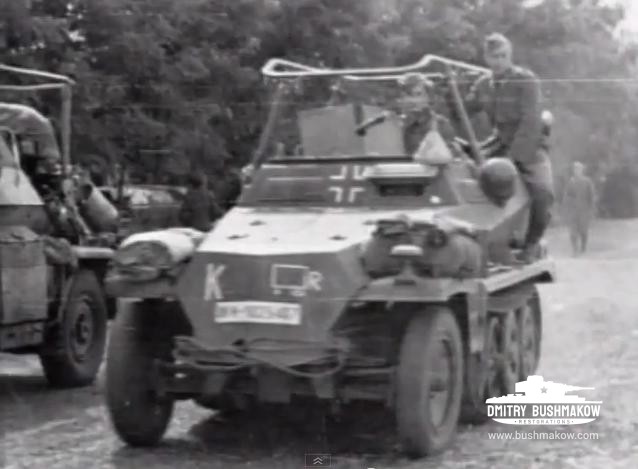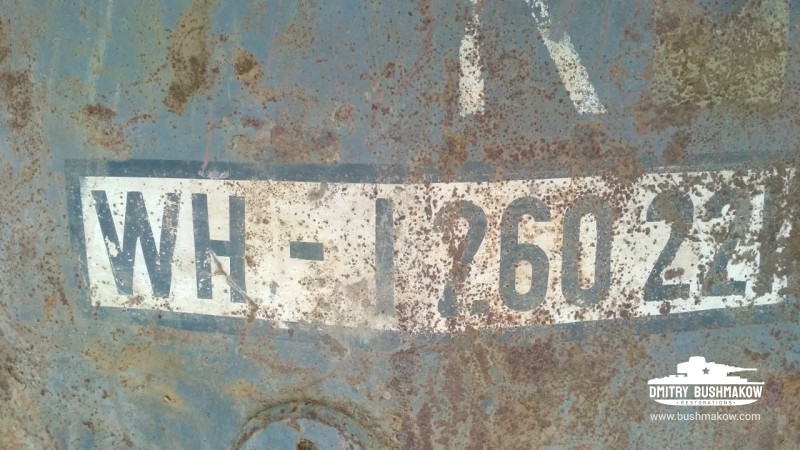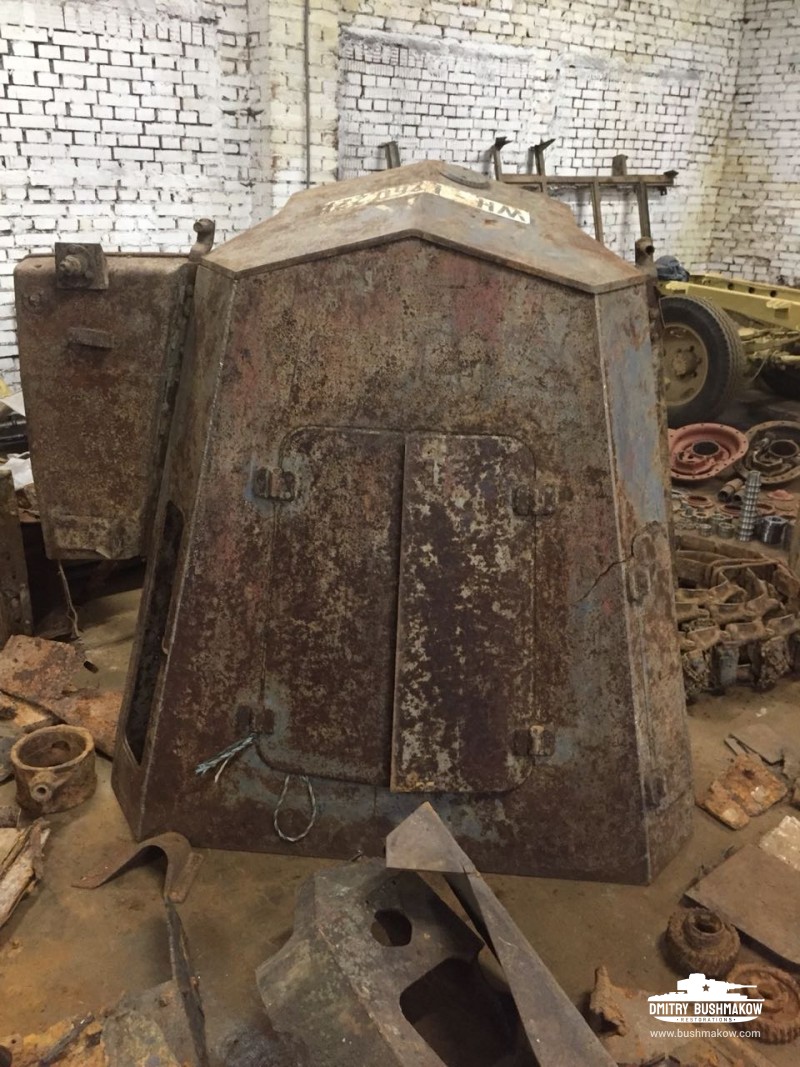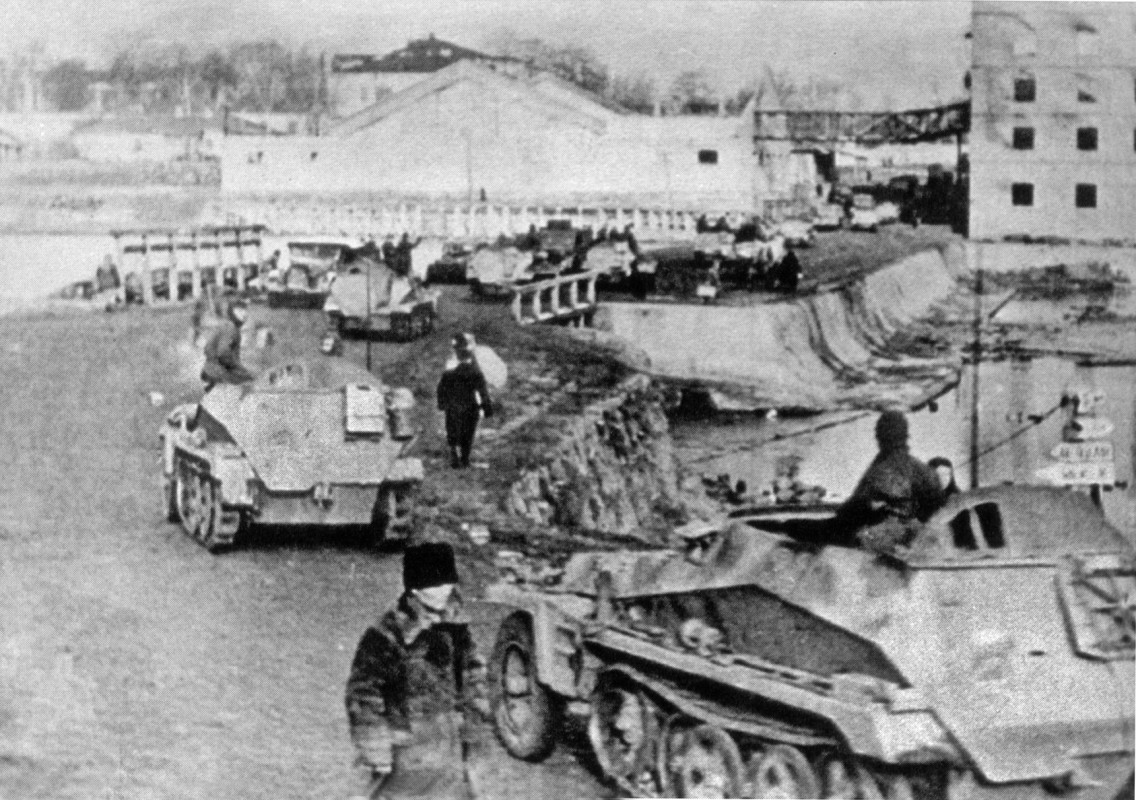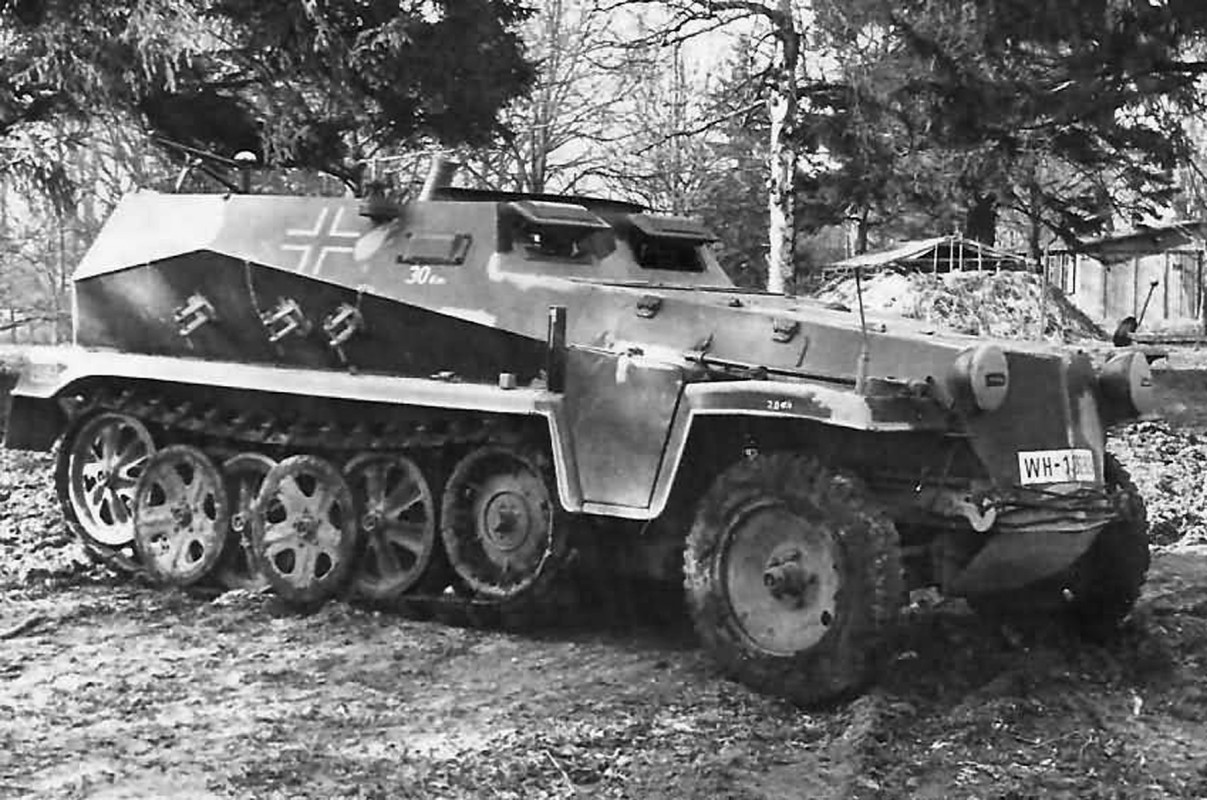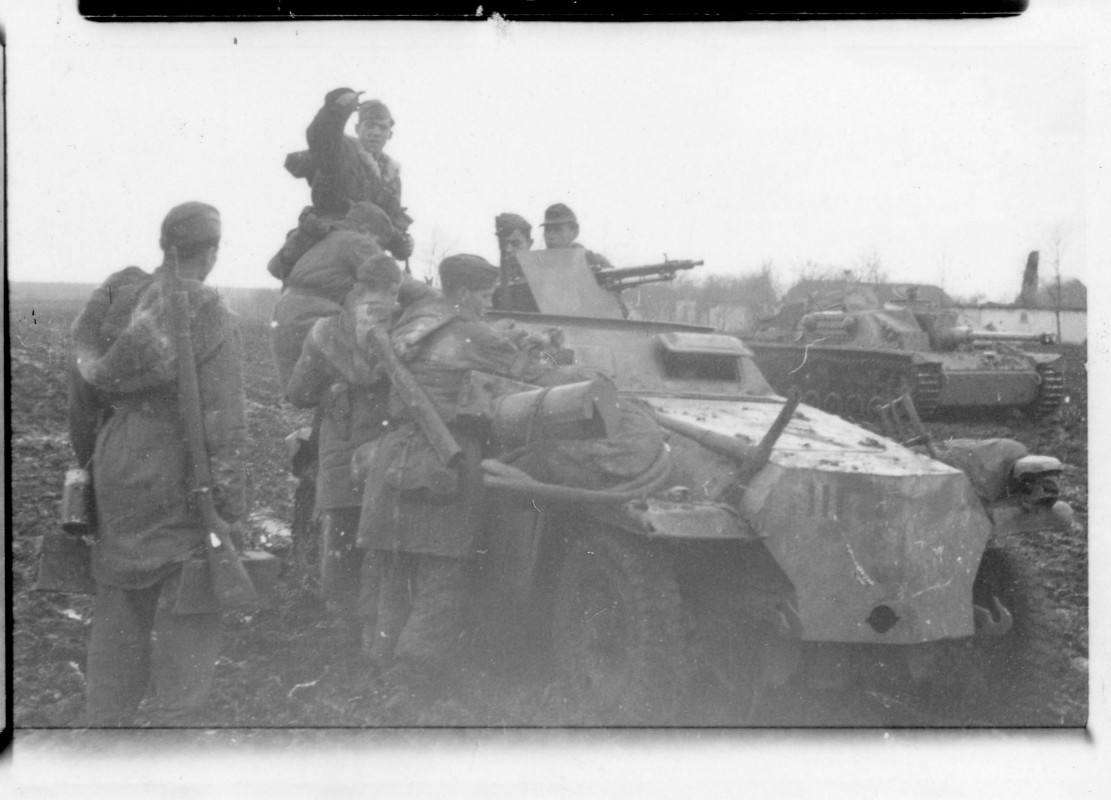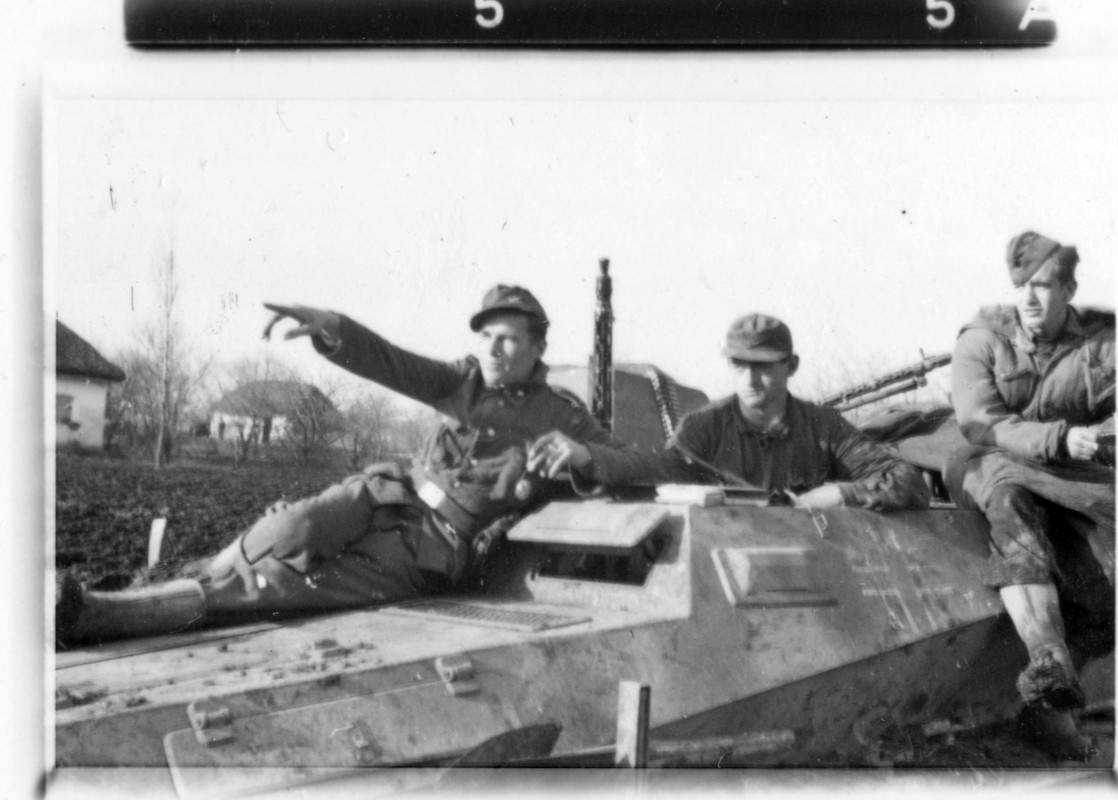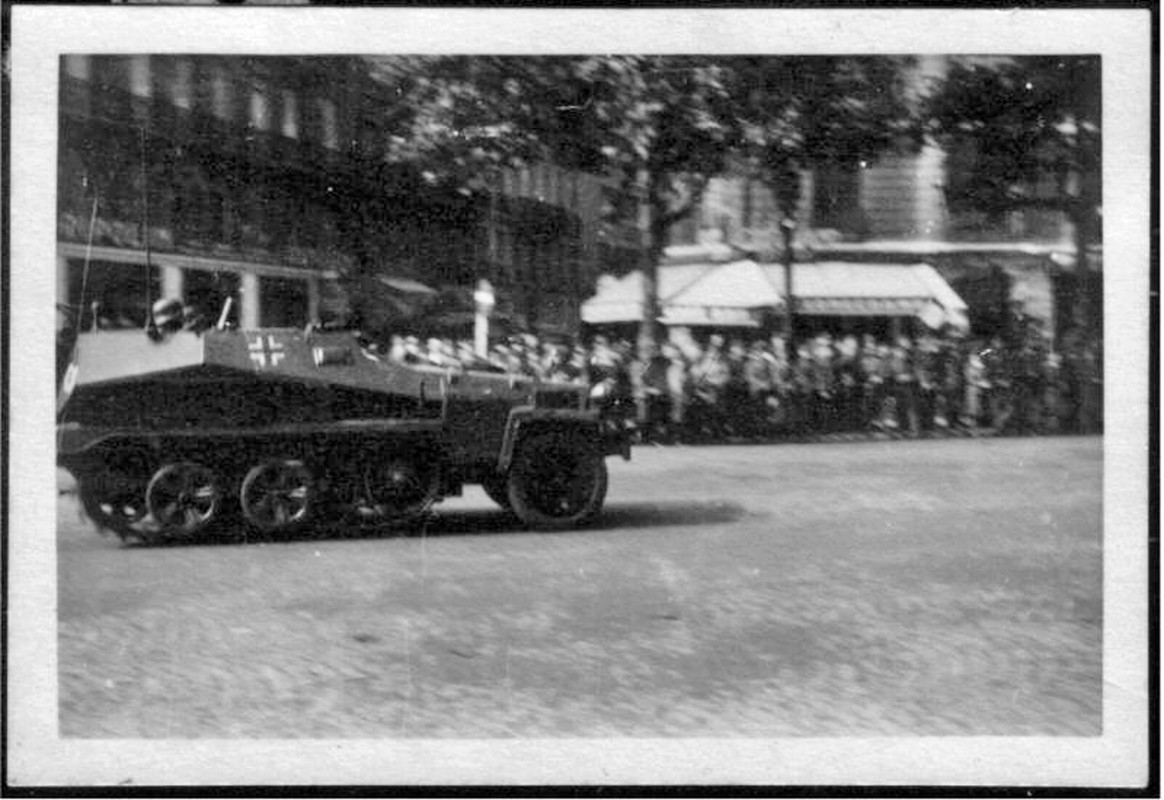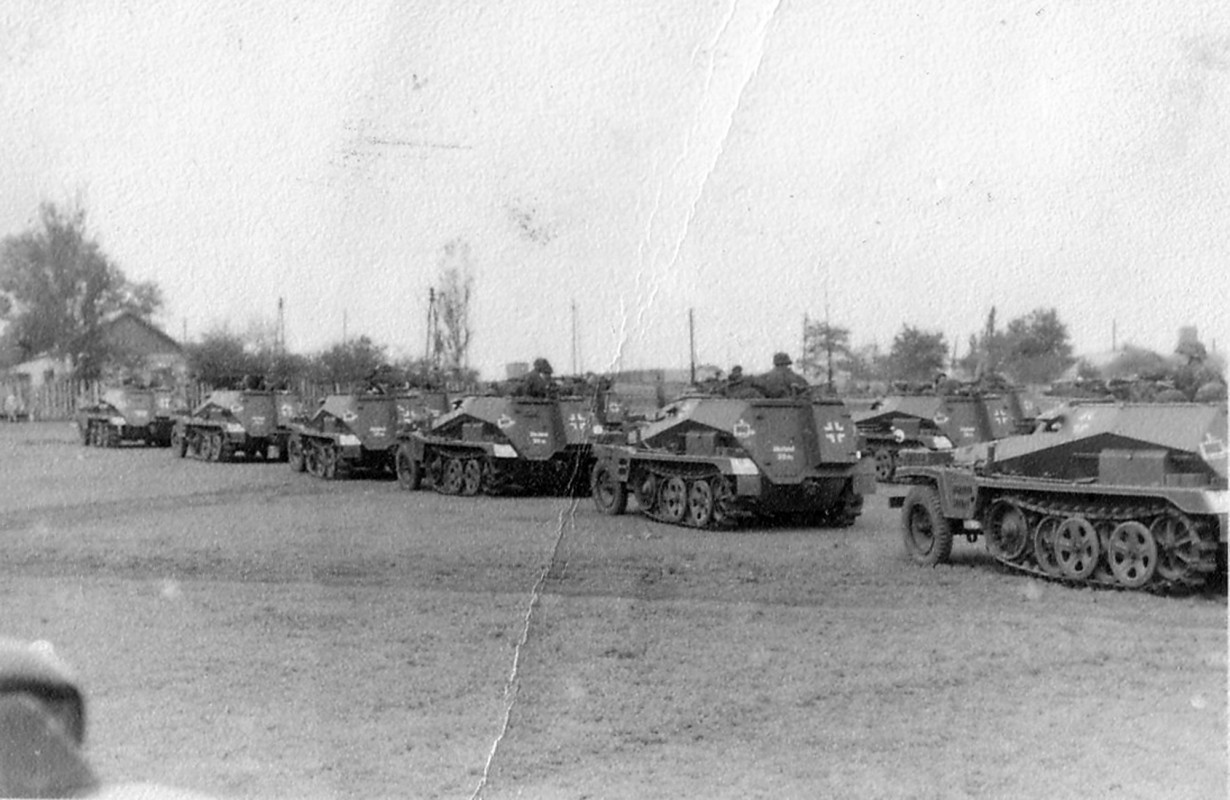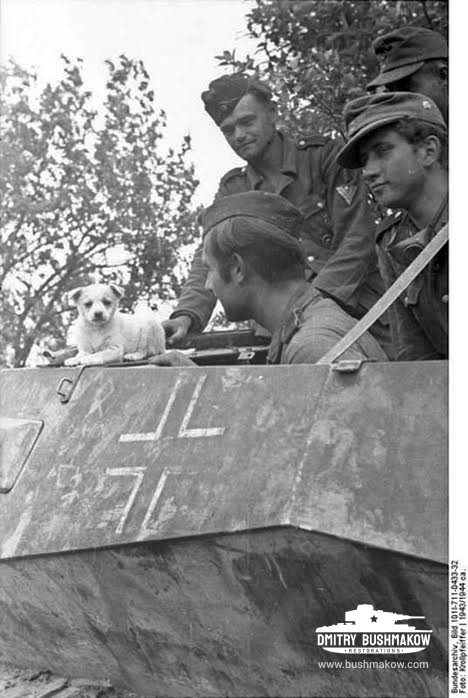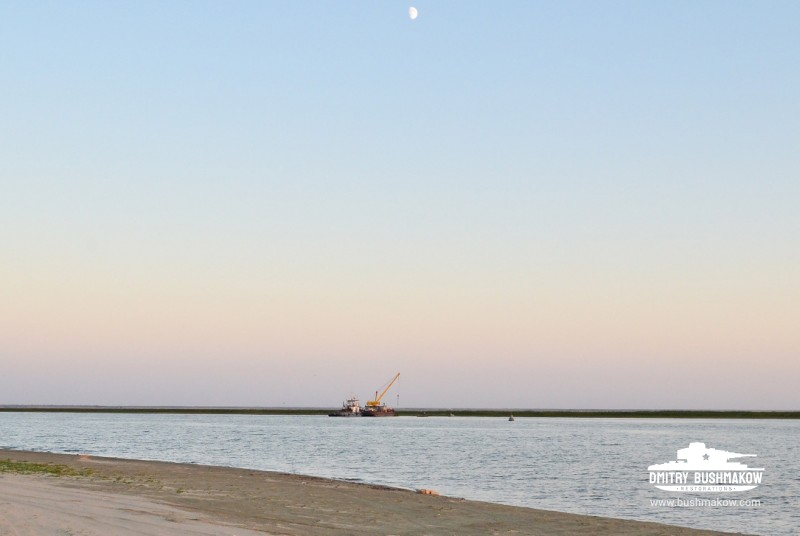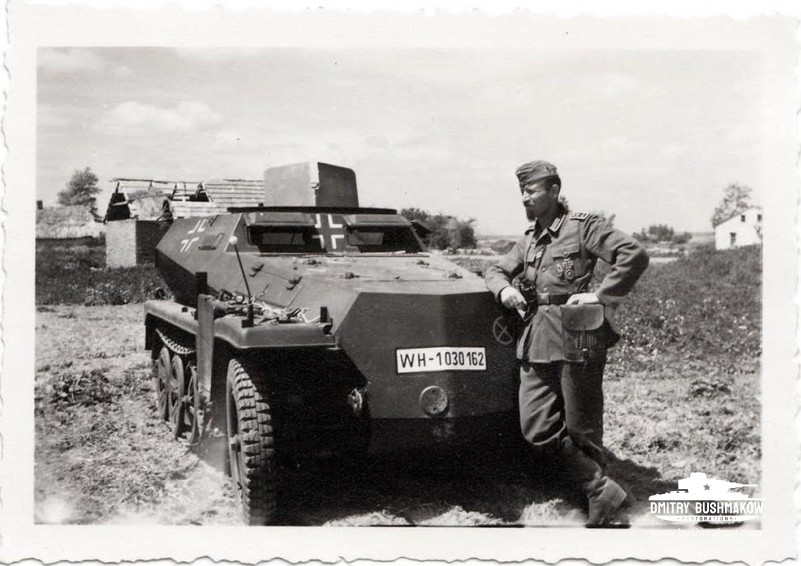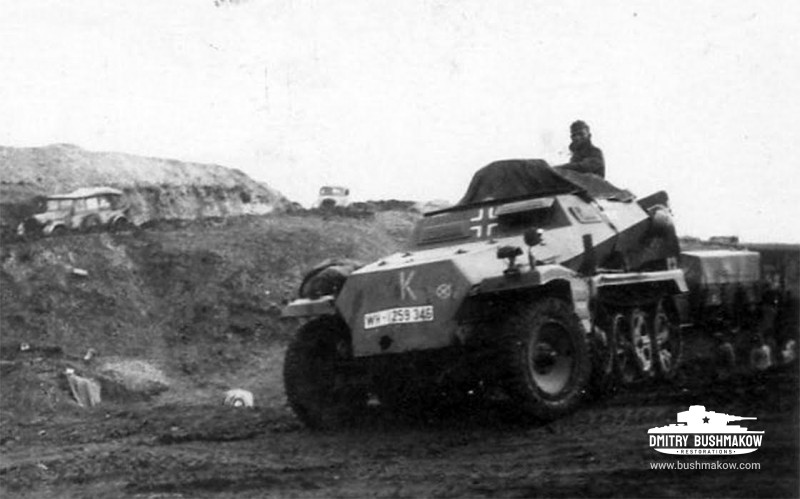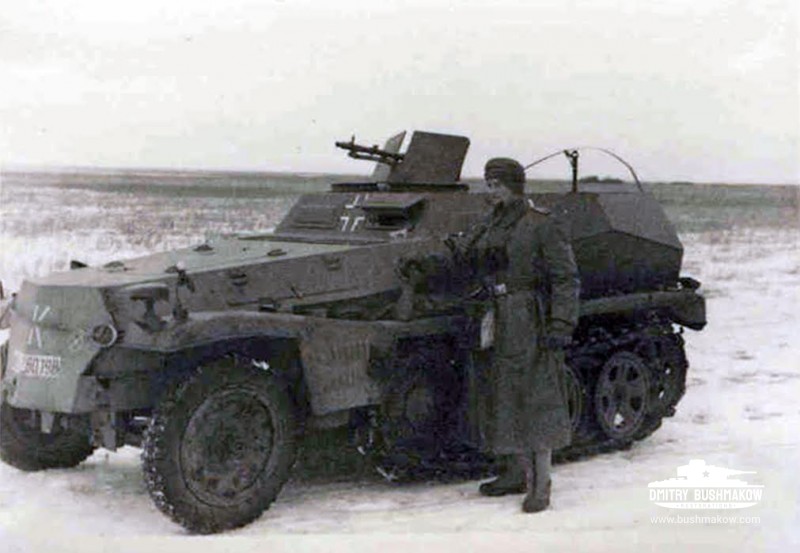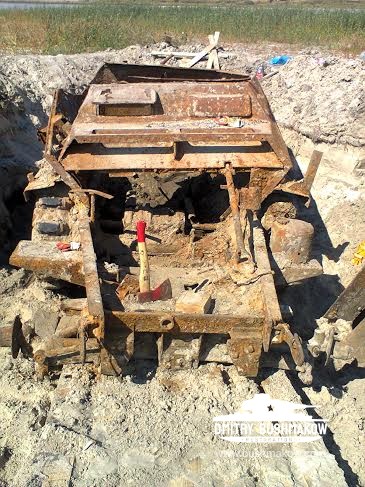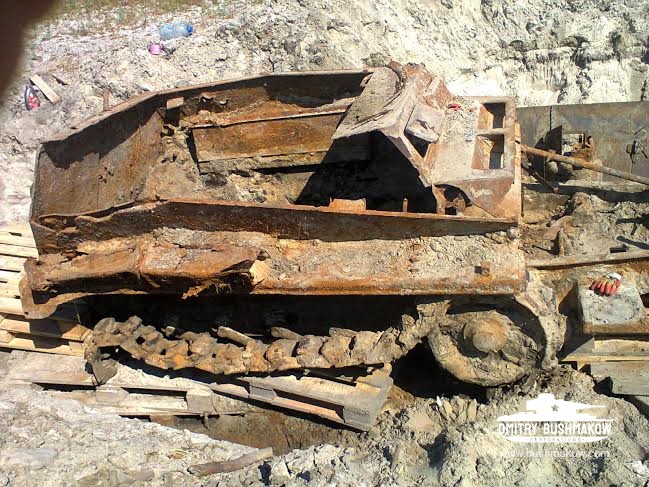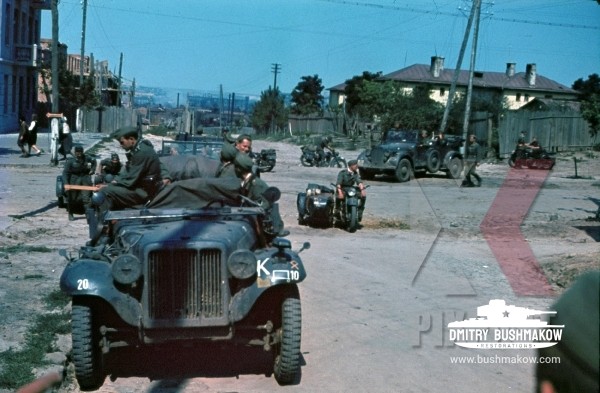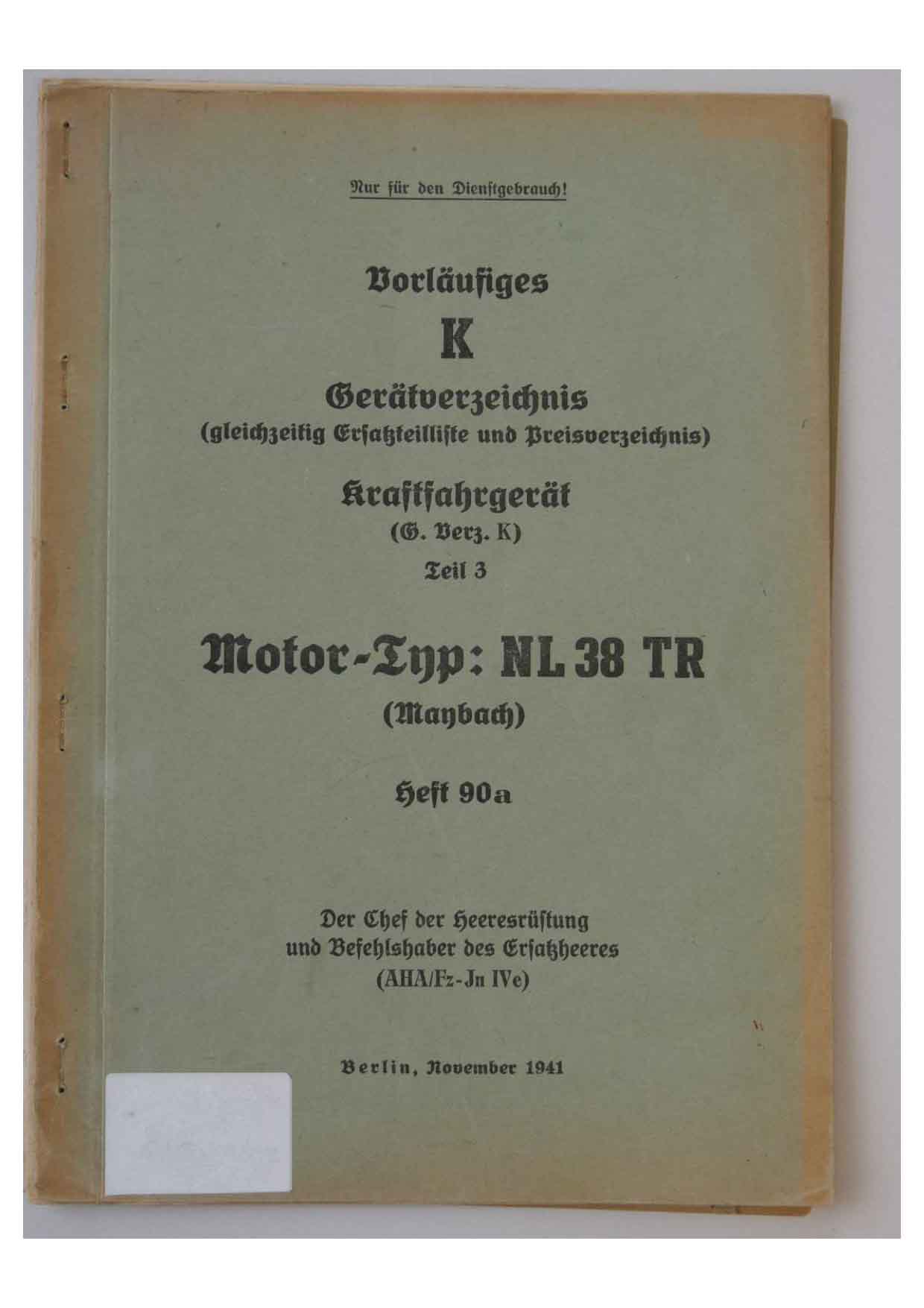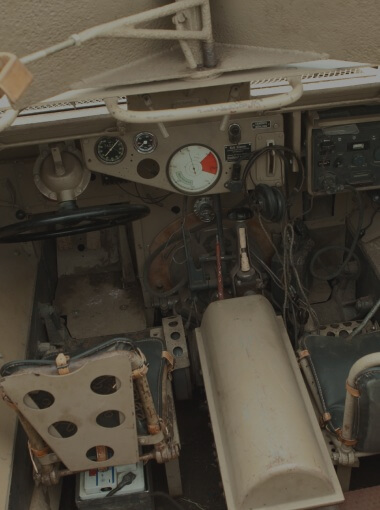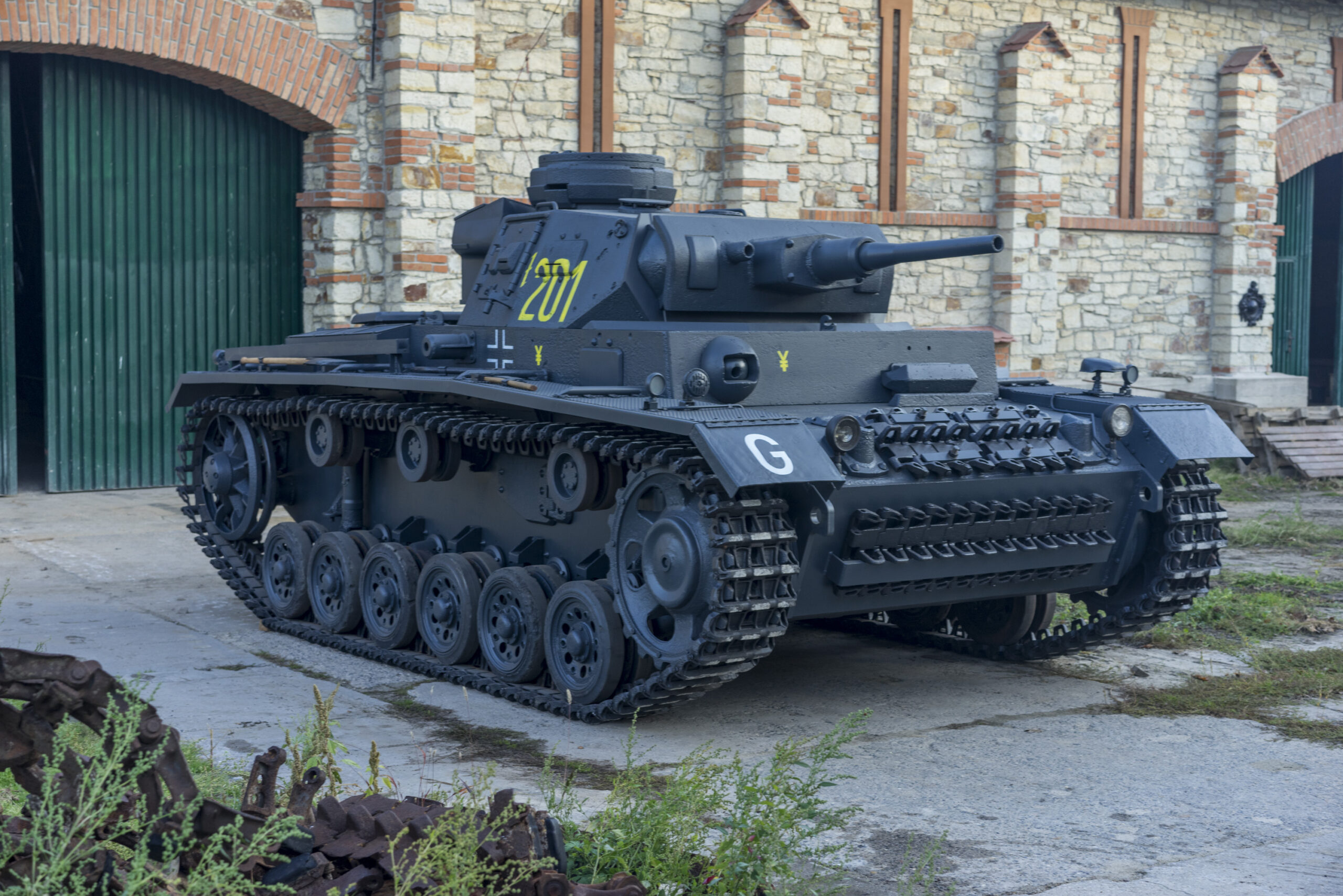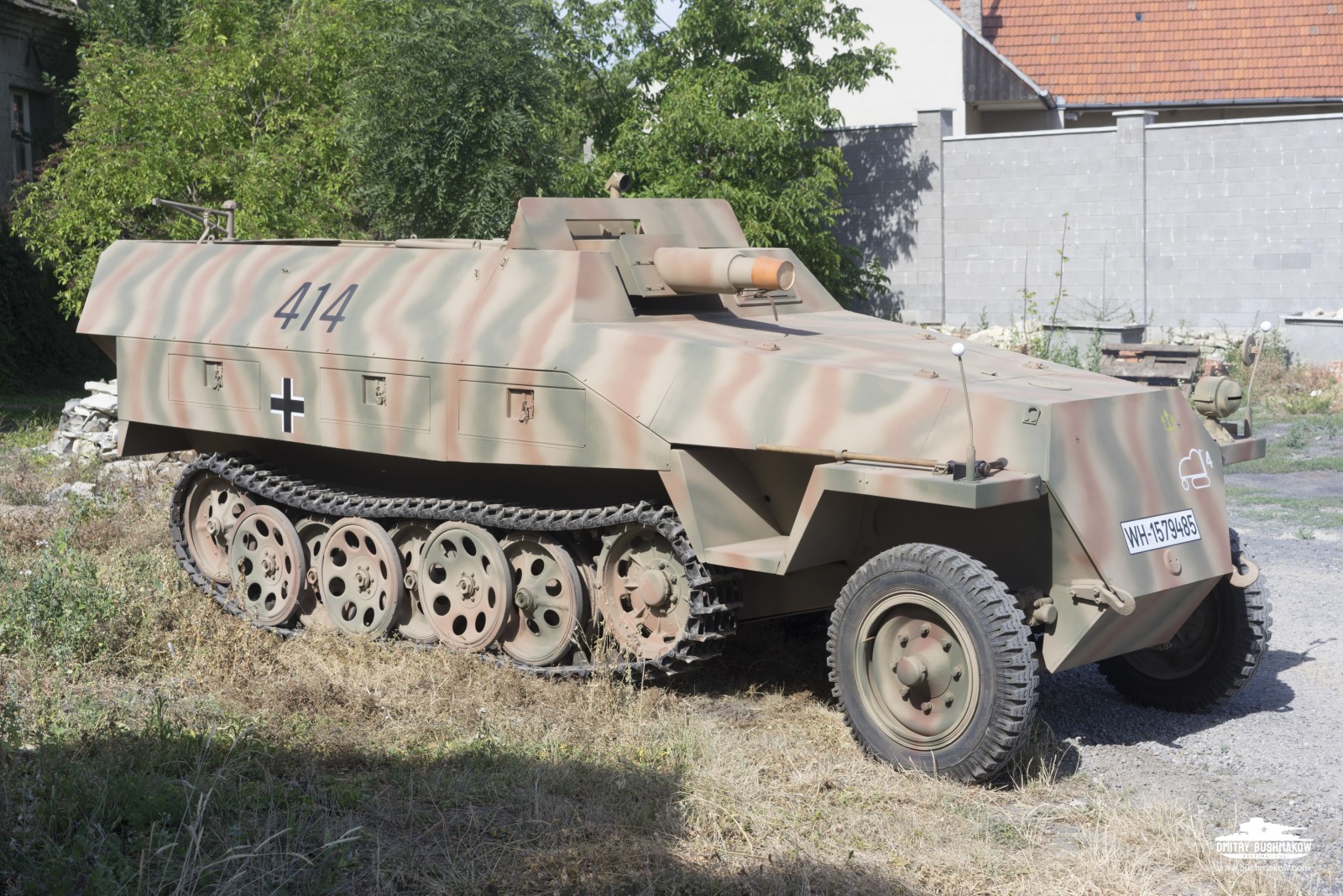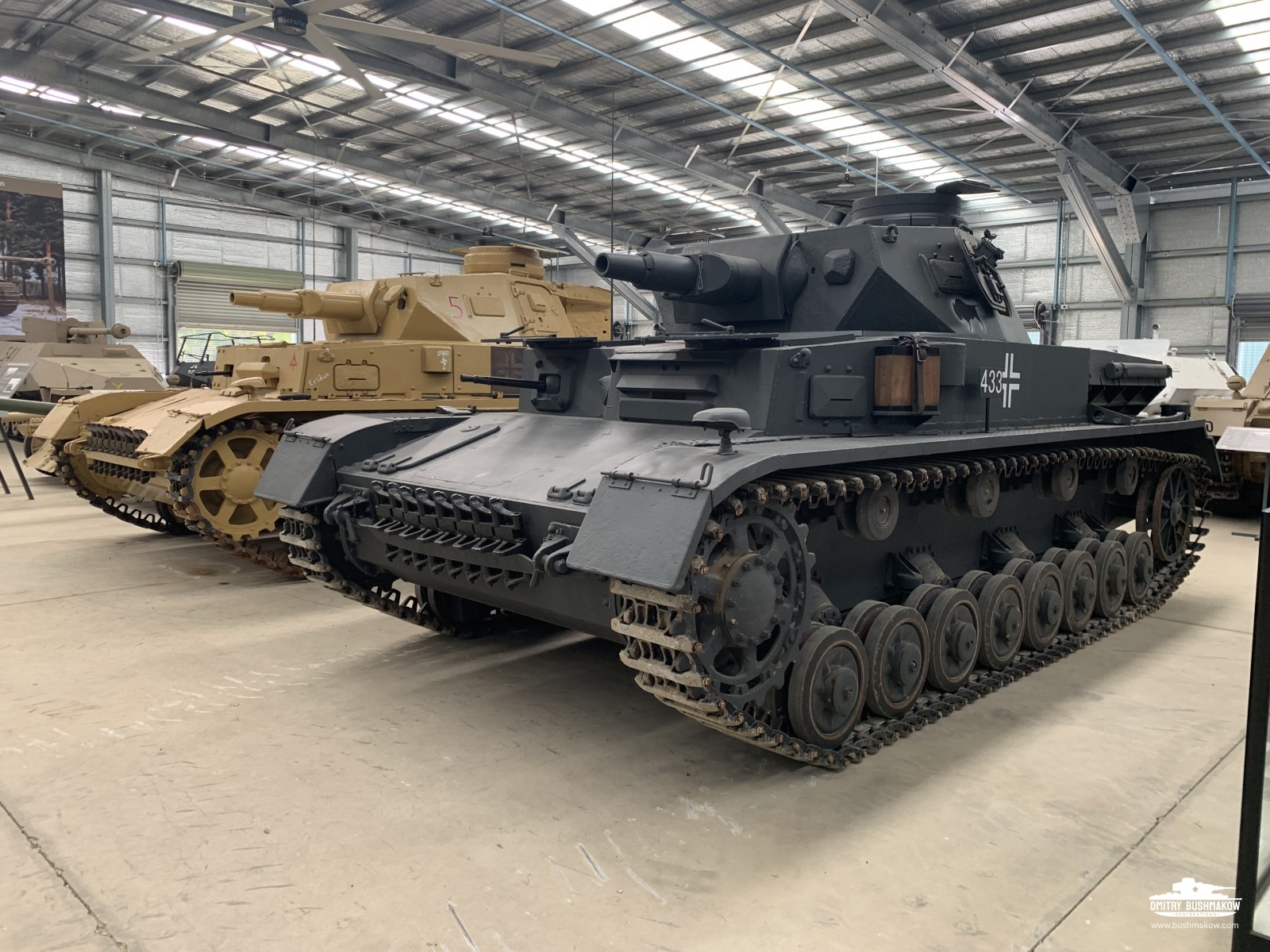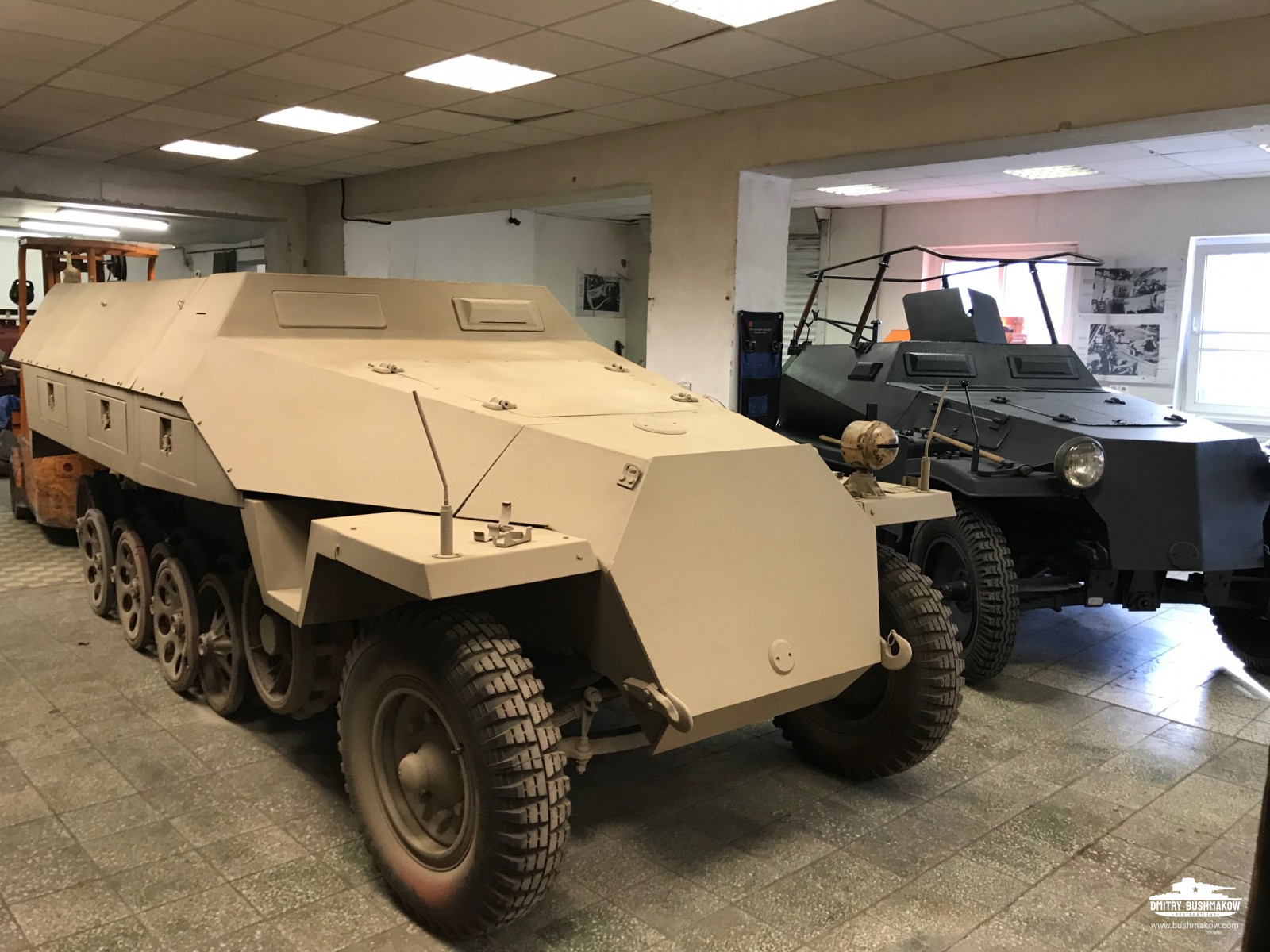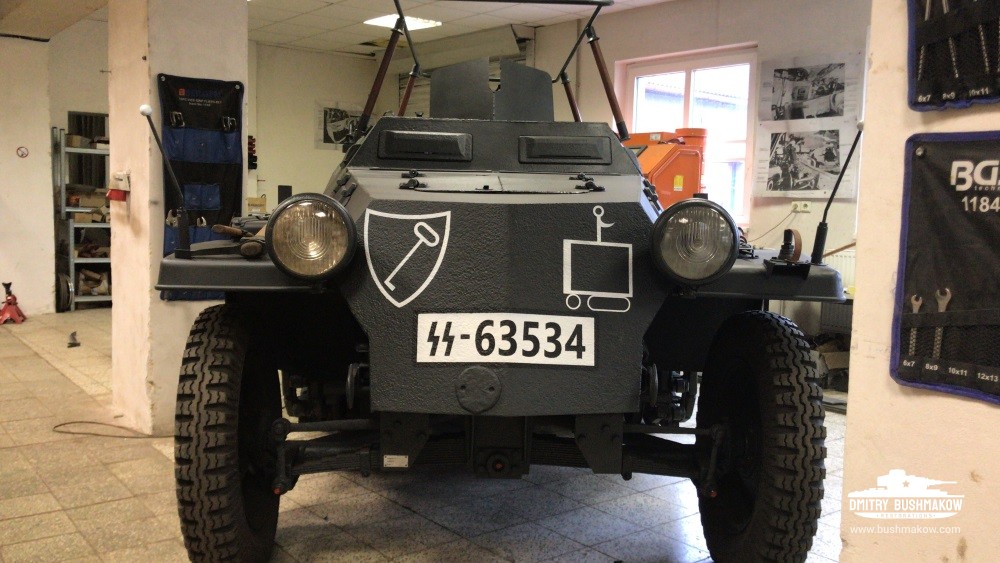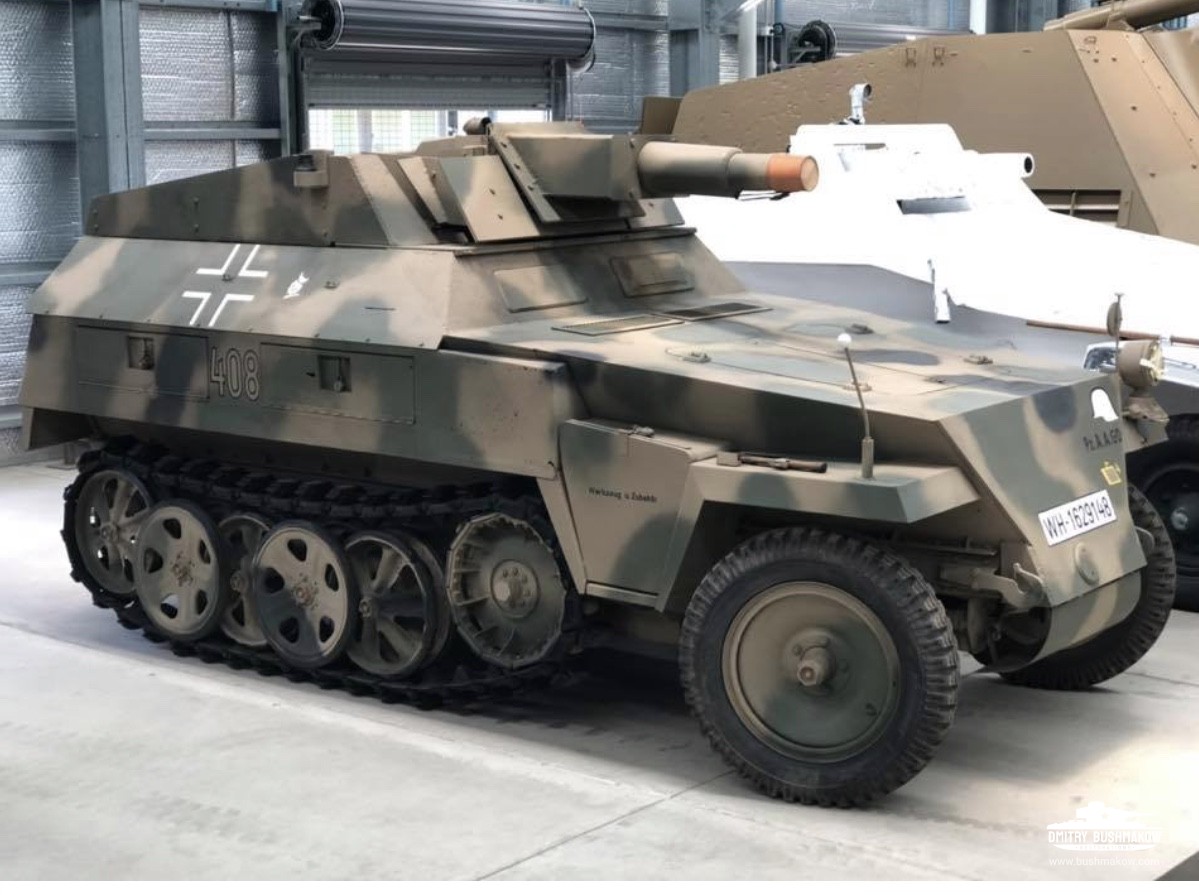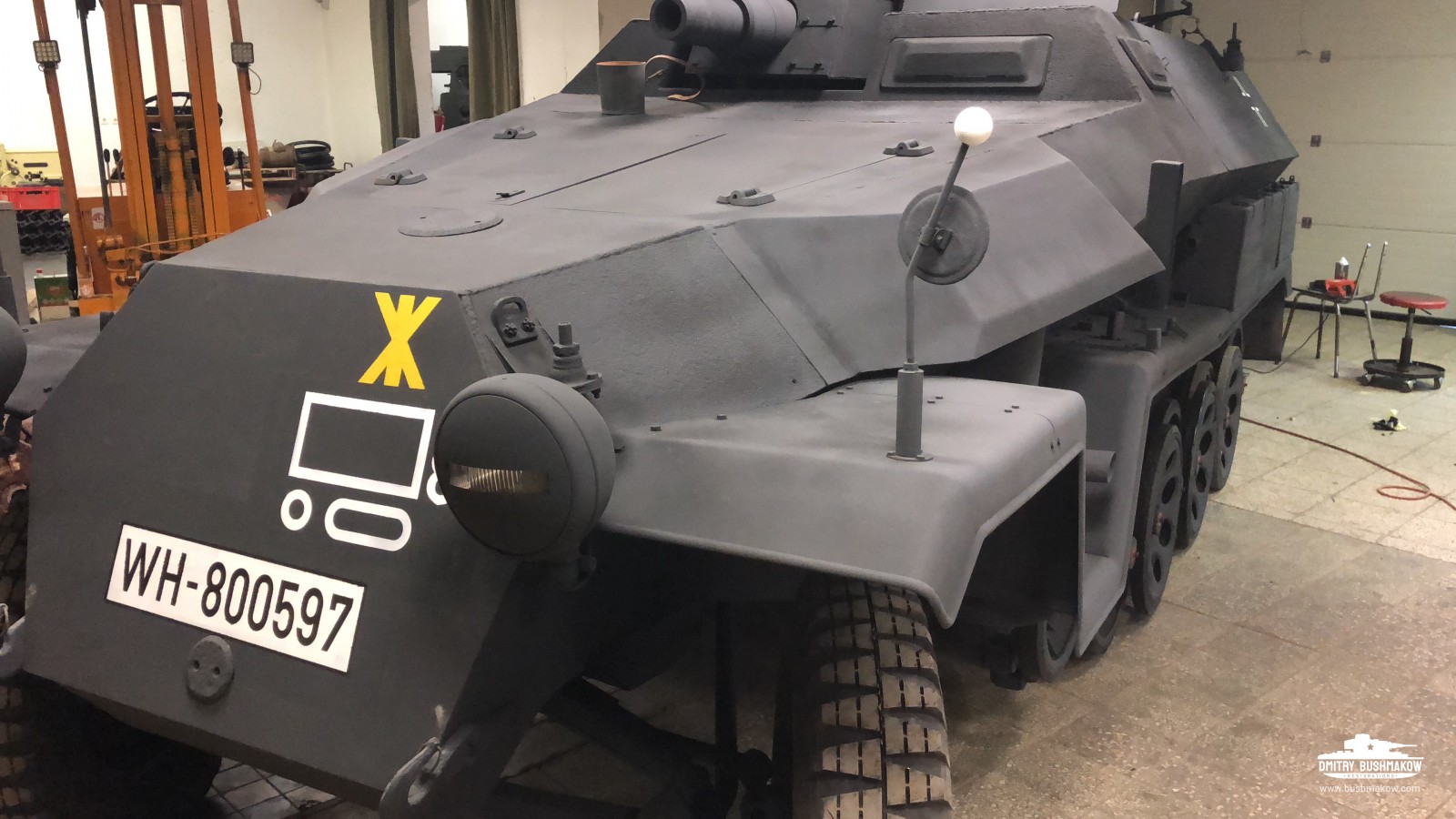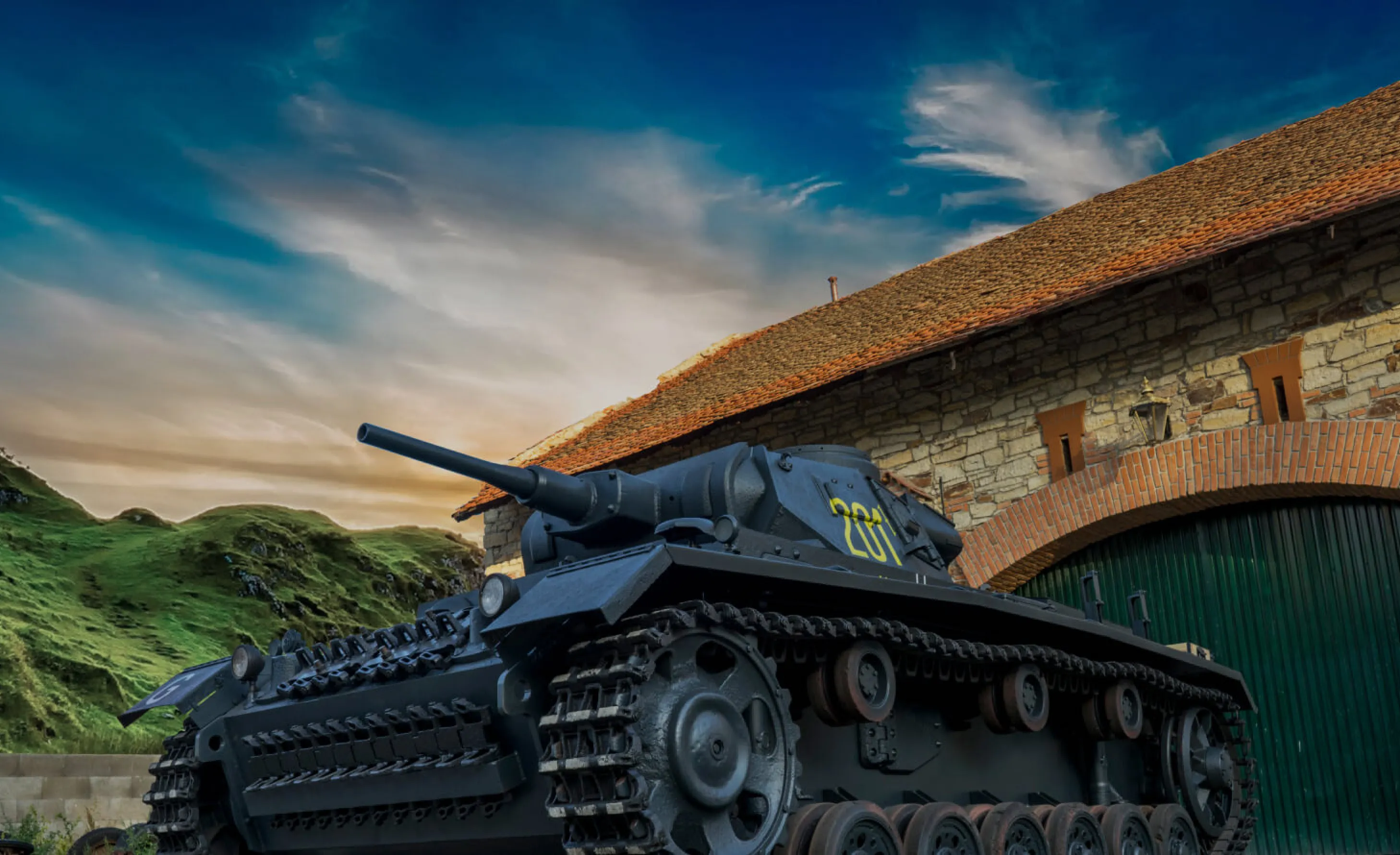

Sd.Kfz. 250/7 ausf A (Trupp) 64 Kradsch.Btl STALINGRAD
Demag D7p, Sd.Kfz. 250/7 Ausf. A schwere Granatwerfer. Assembled 1942 by Demag.
Vehicle was Found in the region of the Stalingrad battle in 2015, during maintenance works on dam reservoir that did not exist in wartime, the vehicle had several large holes from a 45mm gun left side and rear, the wheels and engine were removed a long time ago, but the hull, body and bow with tactical marks motorcycle battalion of the 14th Panzer Division survived. It went through all Stalingrad battle and ended up in December 1942.
Demag D7p, Sd.Kfz. 250/7 Ausf. A schwere Granatwerfer. Assembled 1942 by Demag.
Vehicle was Found in the region of the Stalingrad battle in 2015, during maintenance works on dam reservoir that did not exist in wartime, the vehicle had several large holes from a 45mm gun left side and rear, the wheels and engine were removed a long time ago, but the hull, body and bow with tactical marks motorcycle battalion of the 14th Panzer Division survived. It went through all Stalingrad battle and ended up in December 1942.
It has very significant remains on body
1) Reinforcement holders to hull holding heavy mounting plate for grenade launcher 8cm Gr.W (granatwerfer)*
2) On a back of body field made modification holders for ground plate of 8 cm granatwerfer(which was used for firing mortar outside vehicle if needed)
3) Two boxes fro 5cm PAK-38 rounds mounted on right back fenders(one to a front, one looking backwards) **
4) Lack of MG-Panzerschild mount, holes for it in a vehicle roof covered with bolts, and holding some unknown bracket inside***
On November 24, some panzergrenadier units of the 14th Panzer Division, formed into the «Kampfgruppe Sauerbruch», commanded by the 1st Quartermaster of the 14th Panzer Division, arrived at the bridgehead at Verkhne-Chirskaya (Ib / 14.Pz.Div. ) Captain of the General Staff Peter Sauerbruch. By this time, the number of German forces on the bridgehead had reached 2 thousand people. For more than half a month, they fought here in continuous defensive battles.
Battle group Sauerbruch took up defensive positions southeast of Chir station, covering both bridges across the Don east of Mikos’s group. The group consisted of the 1st company of the 64th motorcycle rifle battalion (1./Kradschützen Bataillon 64), Chief Lieutenant Feßmann, panzergrenadier group Domaschk on armoured half-tracks, composite groups of Aly and Elbinger ( Elbinger), consisting of drivers and mechanics of the supply units of the 14th Panzer Division, who were armed only with small arms.
Parts of the Soviet 1st Tank Corps moved along the snow-covered steppe in three directions, without encountering significant resistance. The northern group moved towards Popov; the central group — to the Verkhne-Chirskaya, and the southern Soviet tank wedge advanced to Surovikino. On the evening of November 24, the advance units of the 1st Panzer Corps attacked the German bridgehead in Verkhne-Chirskaya. There they encountered the Sauerbruch battle group. One of its units — Fessman’s group ( 10 of Sd.Kfz. 250 armored vehicles, half a company of motorcyclists and four 75-mm**** anti-tank guns ) — counterattacked Soviet rifle and tank units, trying to bypass the northern flank of the German defense, and forced them to stop.
On December 11, units of the 2nd German mortar brigade were withdrawn from the bridgehead at Verkhne-Chirskaya, and the main efforts to defend it were taken over by the Sauerbruch battle group. On the morning of December 14, the German defenses at the bridgehead were broken through by tanks from the 7th Soviet Tank Corps. On the night of December 15, the battle groups of Sauerbruch, Mikos and Göbel were withdrawn beyond the Don, and the Soviet advance detachment captured the bridge, which the retreating German sappers could not destroy (control over the ignition wire of explosives was lost). The loss of this bridge made it impossible to further help the troops of the strike group of Colonel-General Goth of Army Group Don, which was formed on November 21 under the command of Field Marshal von Manstein, to break through to Stalingrad through Kotelnikovo.
source
https://www.mihistory.kiev.ua/reich/tank_vo/pd/14_11.42-1.43.htm
*According to german battle strength order (Kriegsstaerkenachweis-KstN) leichte Schützenkompanie (gepanzert) K.St.N.1113 (gp.) (1.3.1942) auf Sd.Kfz.250
Light shooting company armoured on Sd.Kfz. 250 consisted of 4 platoons:
First three were standard,
Fourth was heavy platoon (schwerer), which consisted of 3 squads two equipped with heavy MG
4. (schwerer) Zug
2. (s.M.G.) Gruppe wie 1.
3. (s.Gr.W.) Gruppe
Third heavy mortar squad, of 4 sd.kfz.250’s
1 Gruppenfuhrerfahrzeug(section leader’s vehicle) armed with MG panzershield and range finder(Entfertnungsmesser 14, 34 or 1m R)
2 and 3 Truppfuehrer-farhzeugen (troop leaders vehicle with 8cm mortar) armoured with mortar, 3 K98′ carbines and MG-34 on a rear arm, no MG-34 shield***
4 Munitionsfarhzeug(ammo vehicle) armoured with MG in panzershild etc, same as Leaders vehicle
**
K.St.N.1113 (gp.) (1.3.1942) auf Sd.Kfz.250
4.s.Zug: between 1 and 2 squad handwritten «2.(5cm Pak)»
KsTN document says that in 1942 4th platoon had two 50mm Pak-38’s, but no word about which vehicles have to tow them and bring ammo.
boxes on side fender is partial answer to that, they used to put 8 rounds(2boxes) on 250’s and same vehicles used to tow Pak.38’s
source:
https://www.wwiidaybyday.com/kstn/kstn1113gp1mar42.htm
****
mentioned four 75mm guns could be mistaken in a book or used from different military detachment/formation
Process in detail
Original historical photos
Specifications
|
Crew
|
4
|
|
Communication
|
fusprech f
|
|
Armour protection
|
15mm front 8-10 mm sides
|
|
Main armament
|
8cm S.Gr.W. 34, - 80mm heavy mortar
|
|
Additional armament
|
3x K98 rifles, MP-40, MG-34
|
|
Additional ammunition
|
2x box for 4 rounds PAK-38
|
|
Towing capability
|
1ton
|
|
Track type
|
Zpw, Zgw 51/240/160 demag, 38 per side.
|
|
Combat weight
|
5.8 ton
|
|
Engine
|
Maybach HL42 TRKM
|
|
Transmission
|
Maybach Variorex VG 102 128 H
|
|
Production Year
|
1942
|
|
Factory
|
Demag
|
|
Maximum speed
|
65 km/h
|
|
Hand and pedal brakes
|
hydraulic
|
|
Wheels
|
20'
|
|
Tyres
|
6-20
|
|
Length
|
4,560 m
|
|
Width
|
1,945 m
|
|
Height
|
1,66
|
|
Turning radius
|
9m
|
documentation
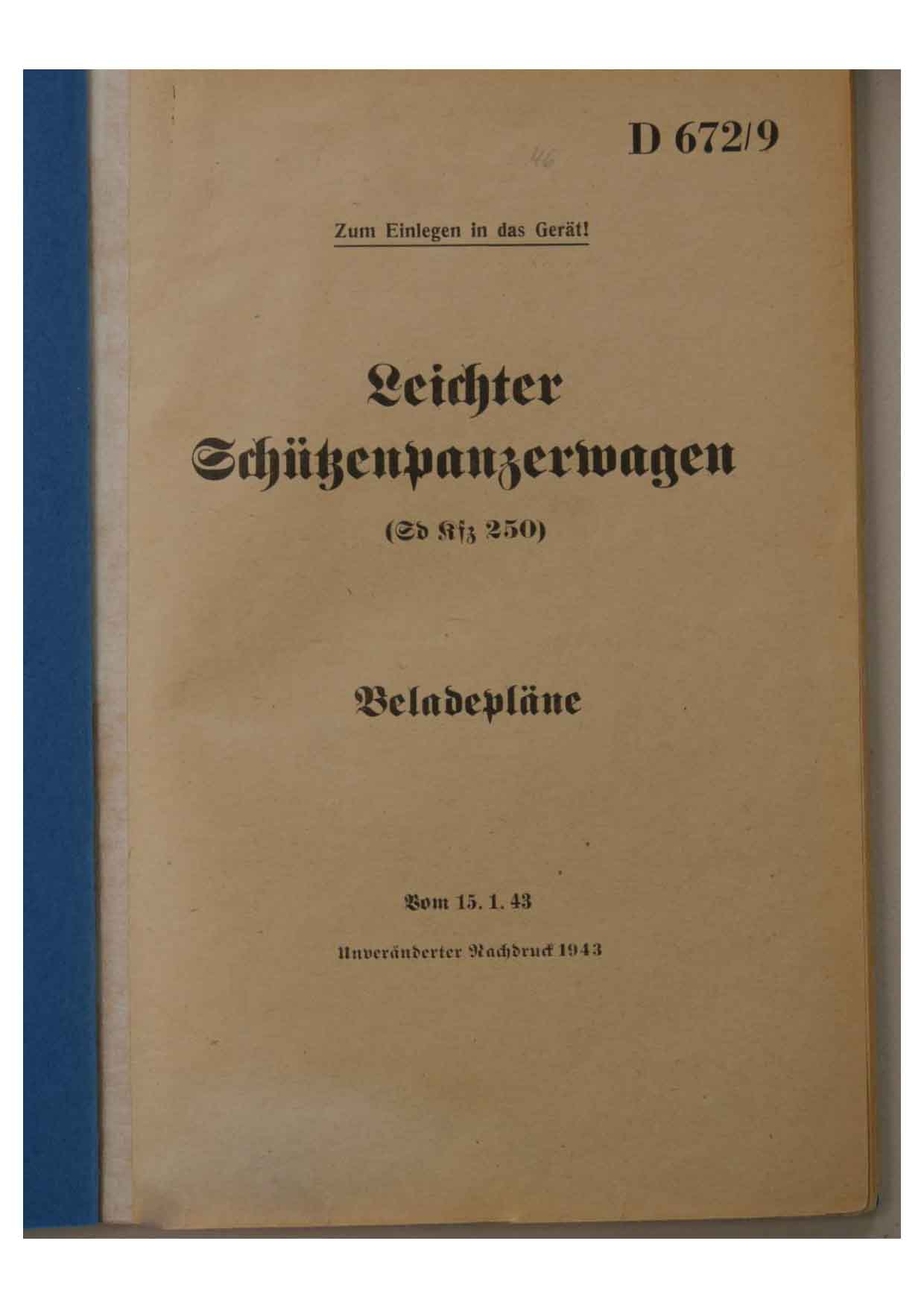

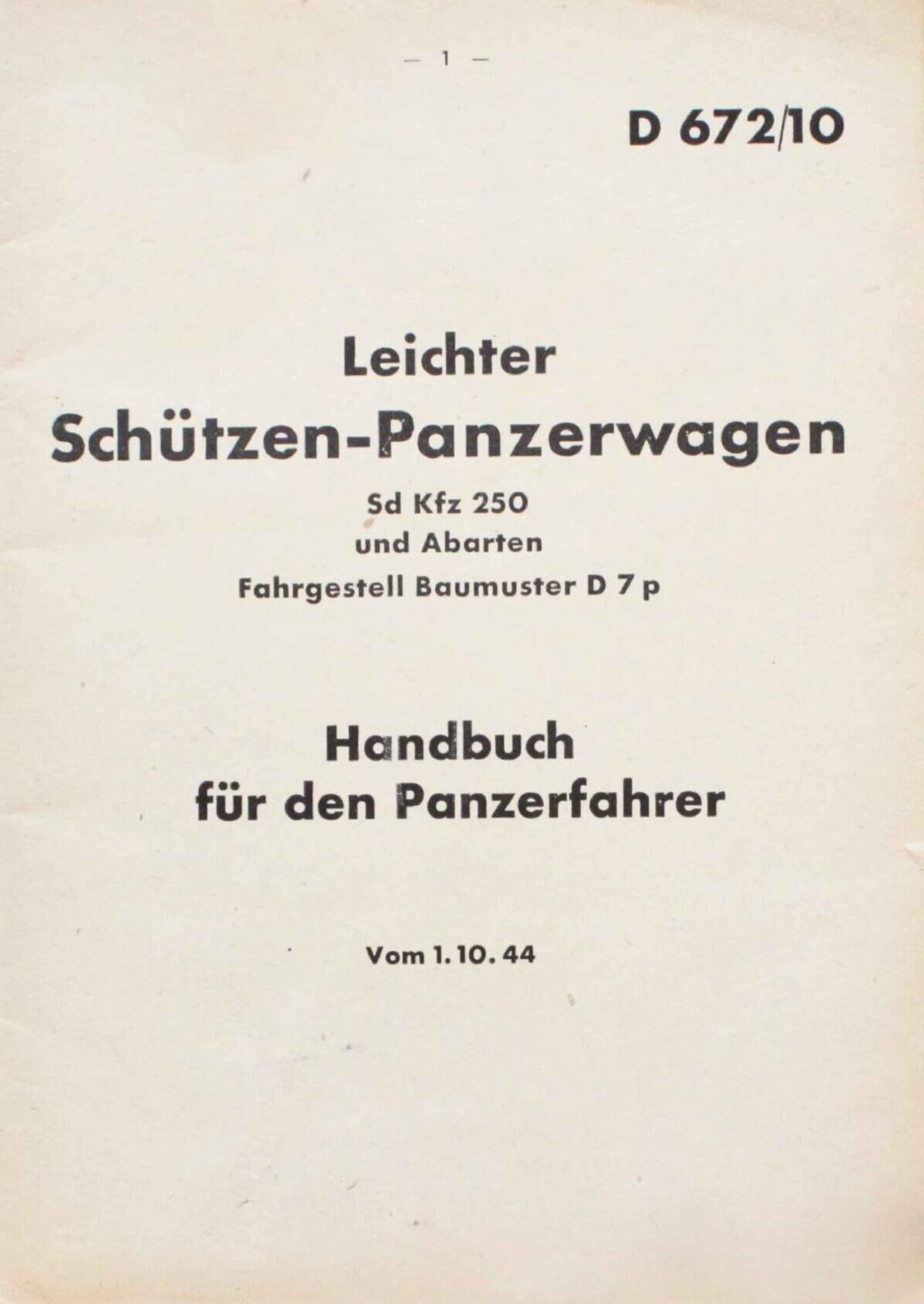

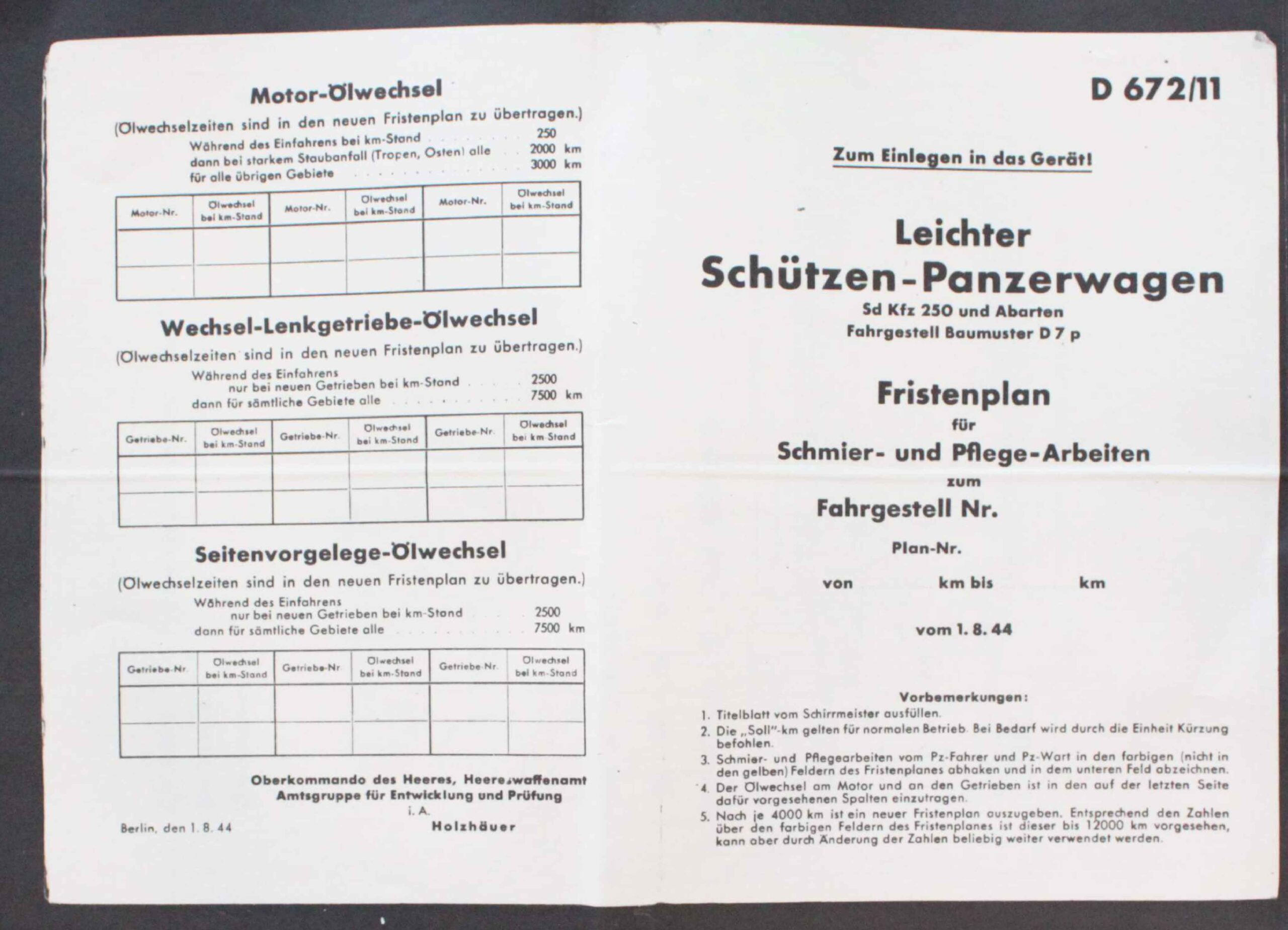



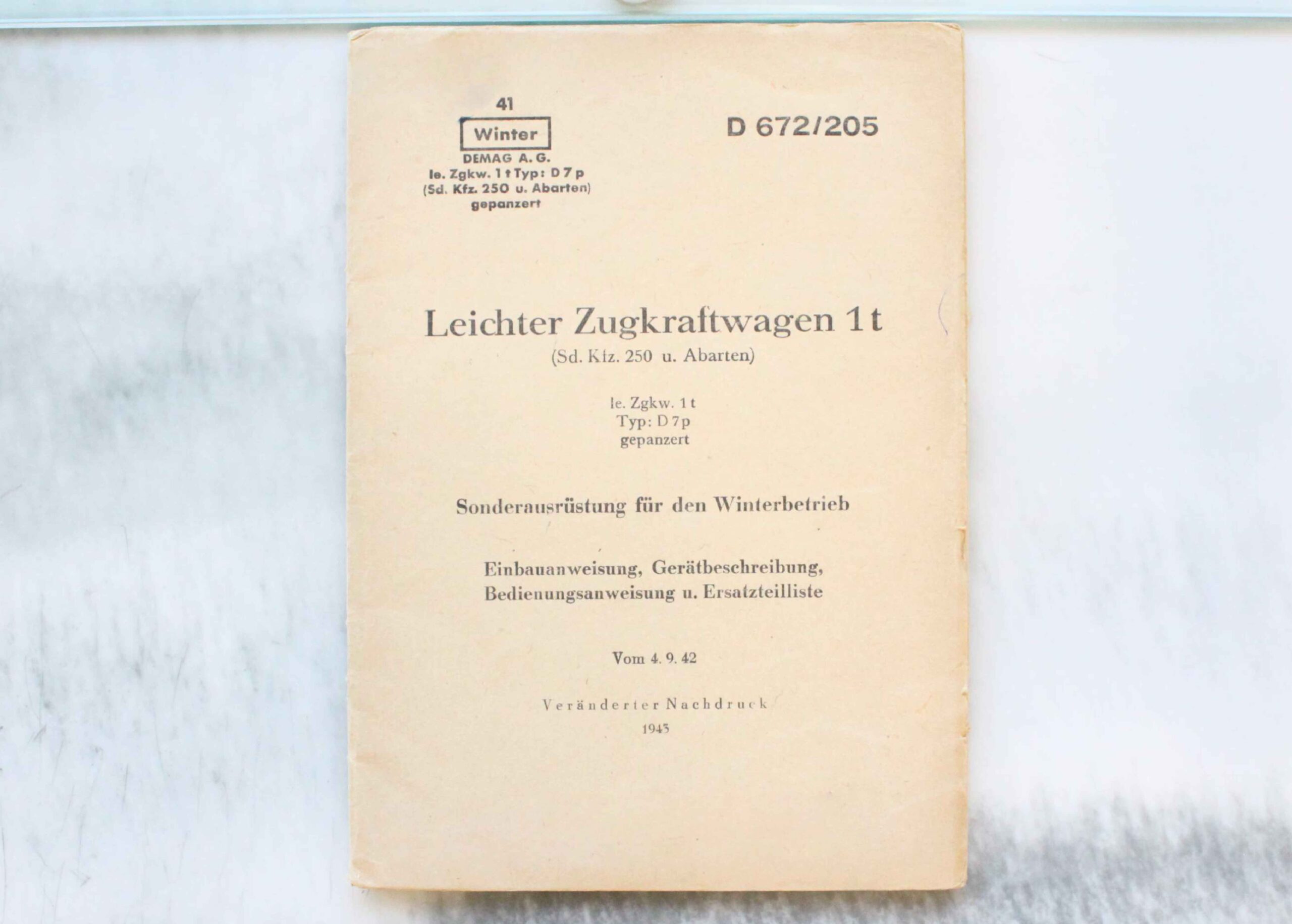

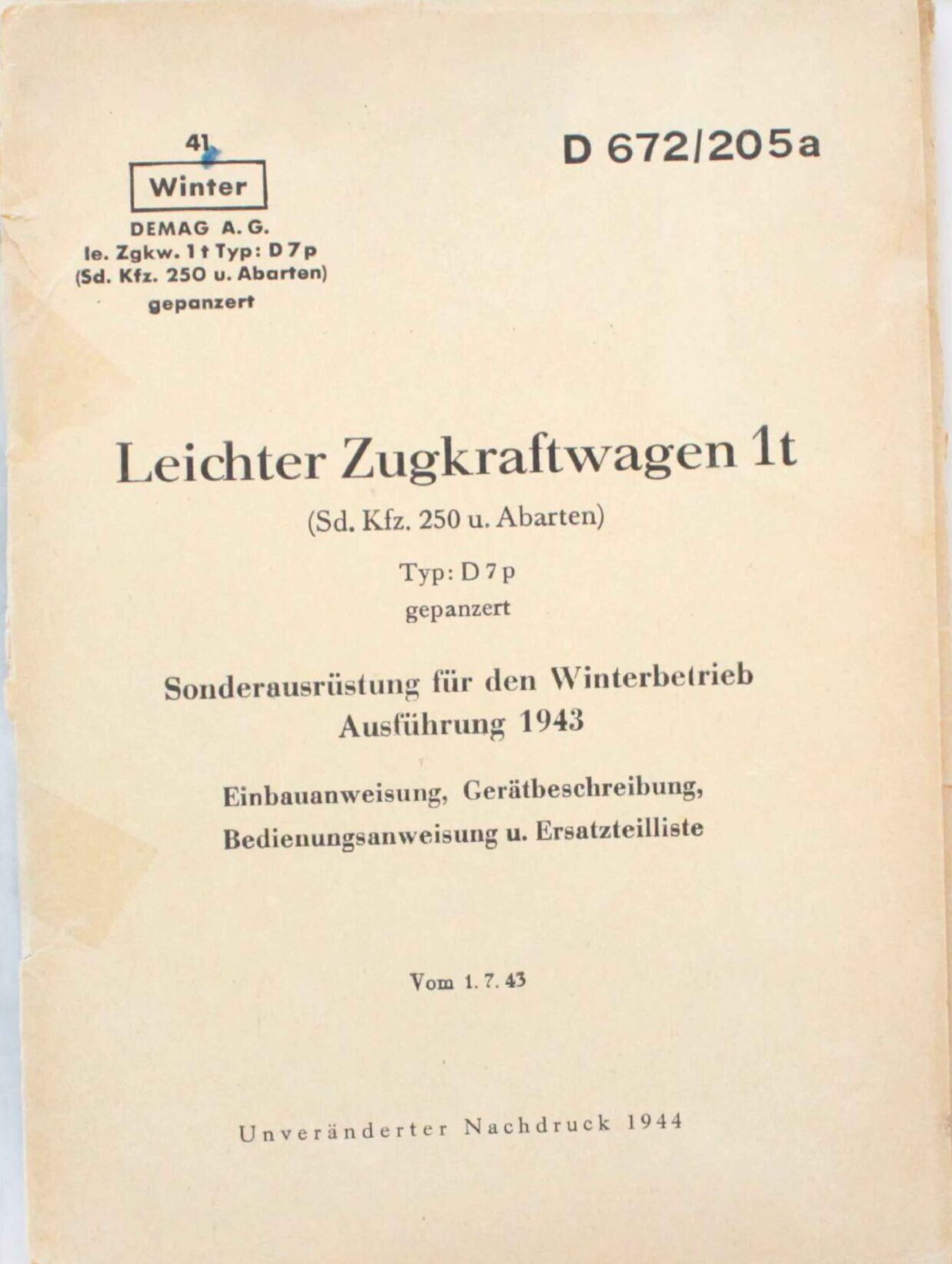



Services

